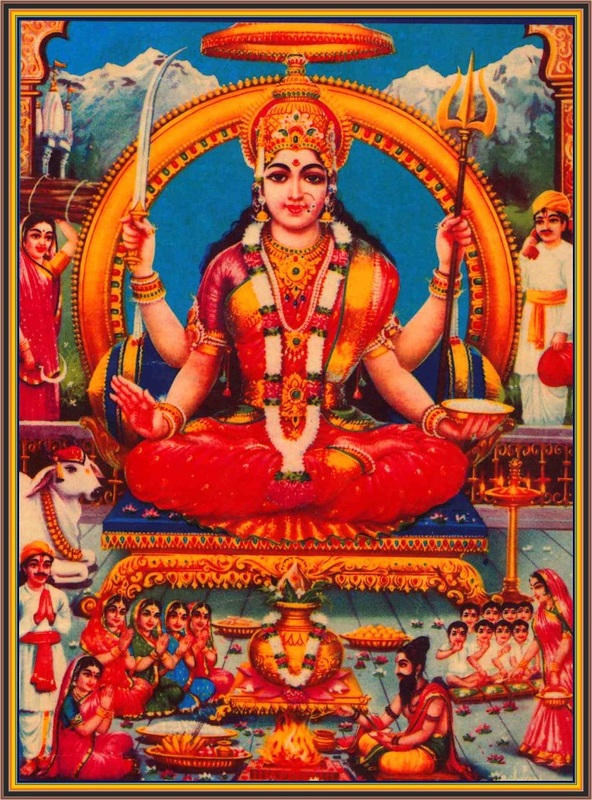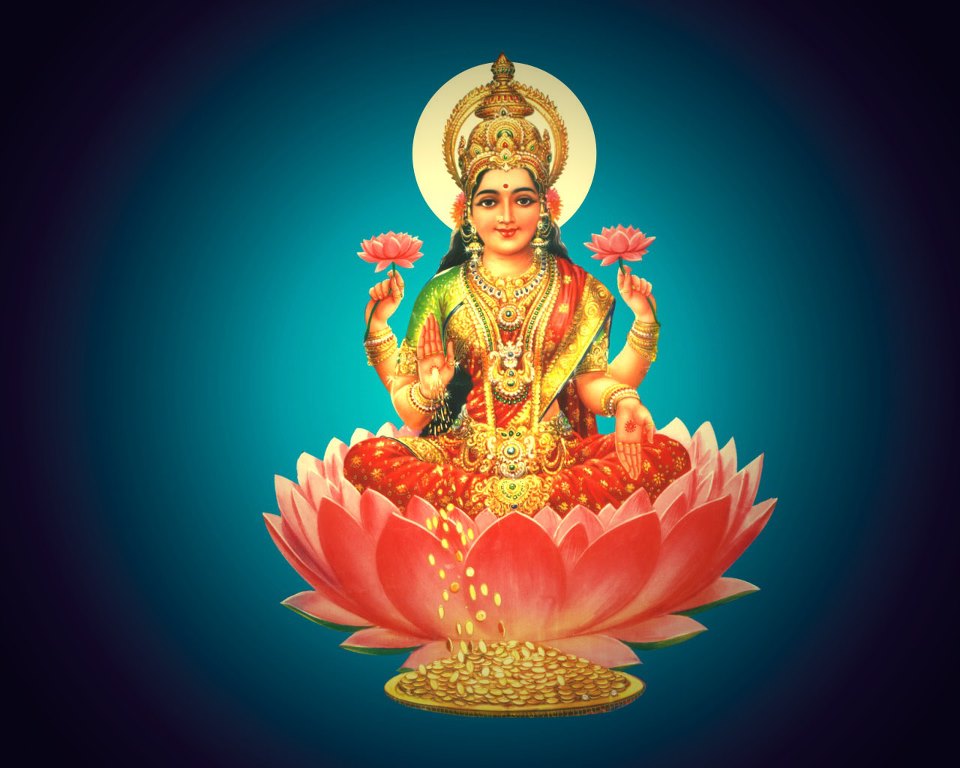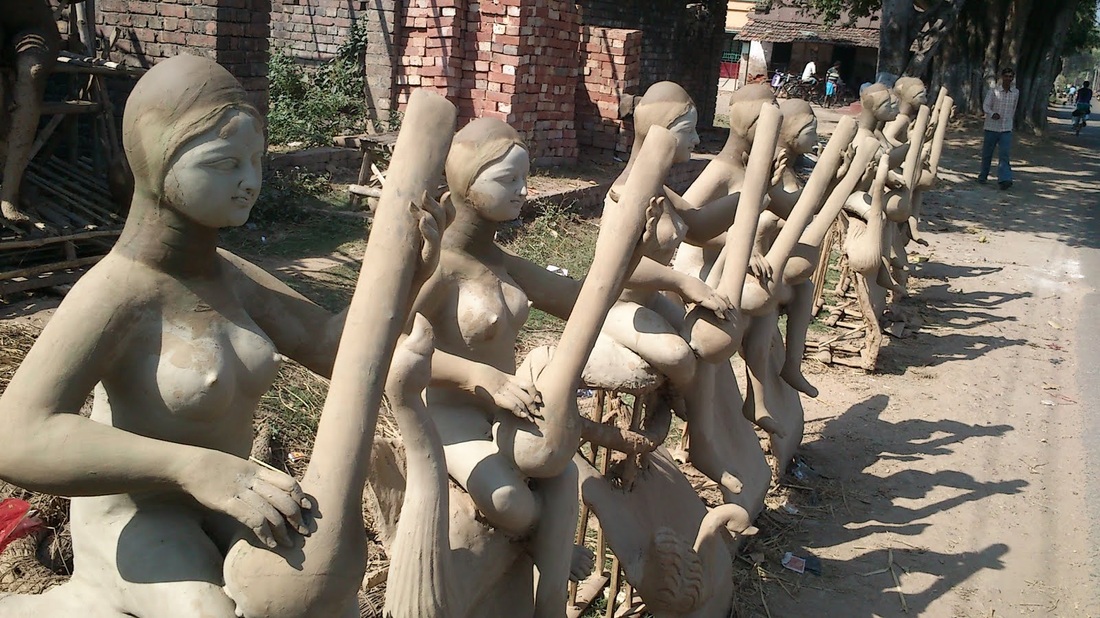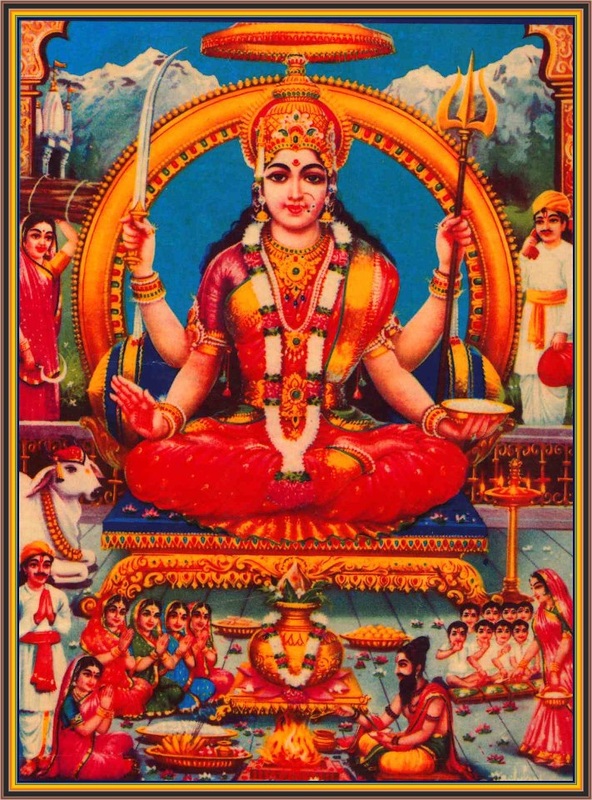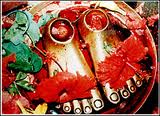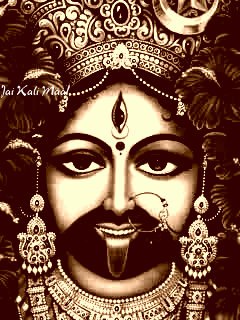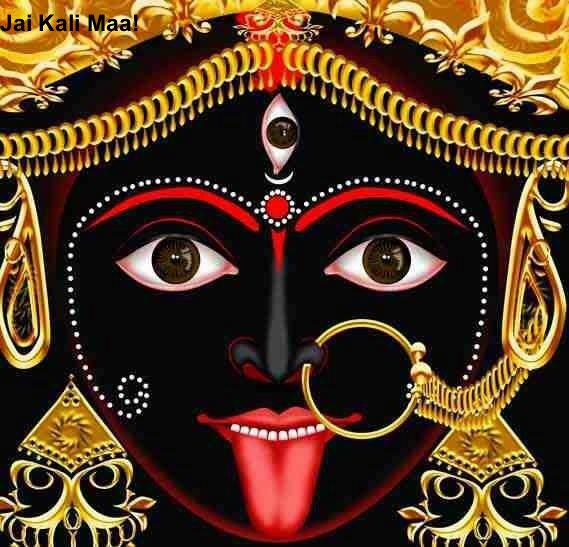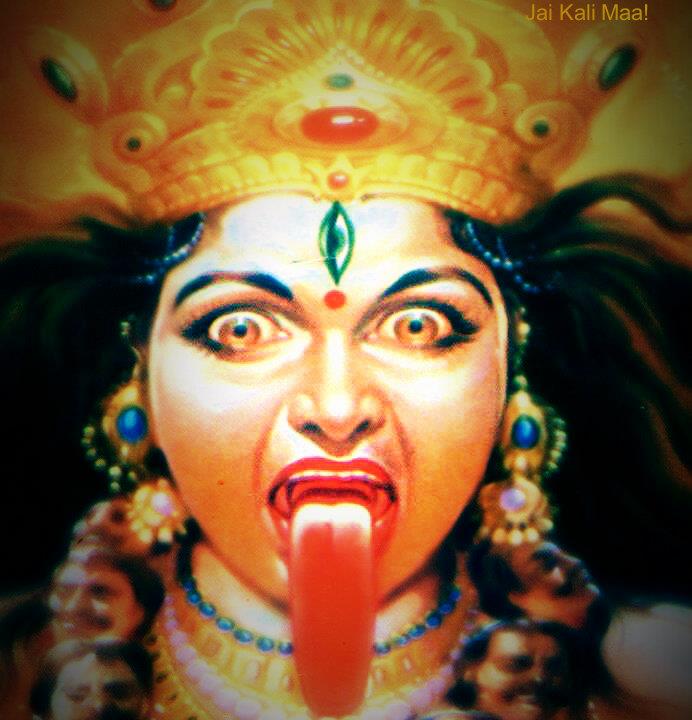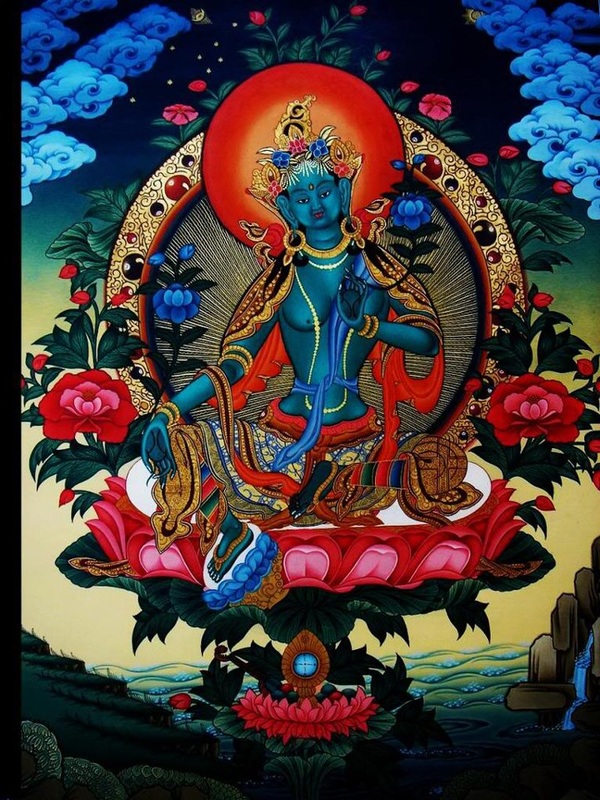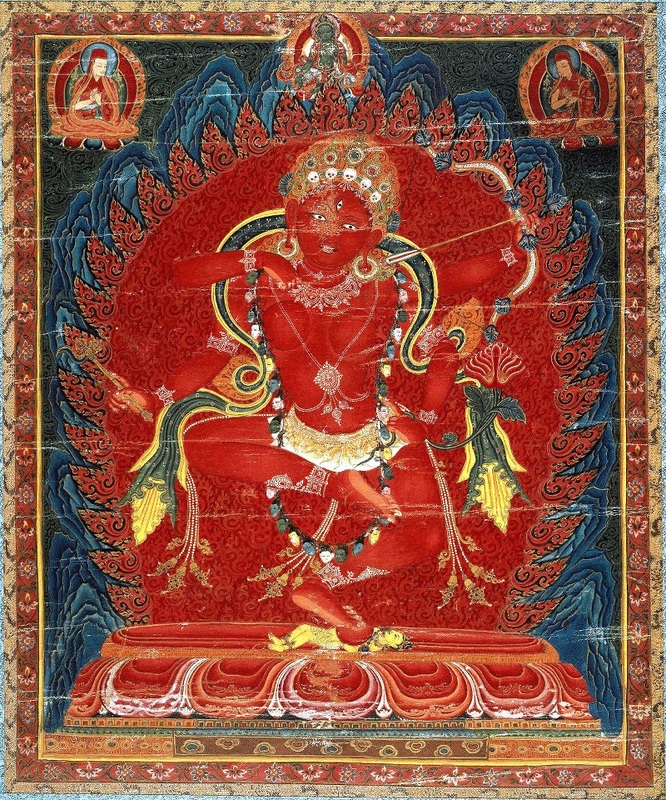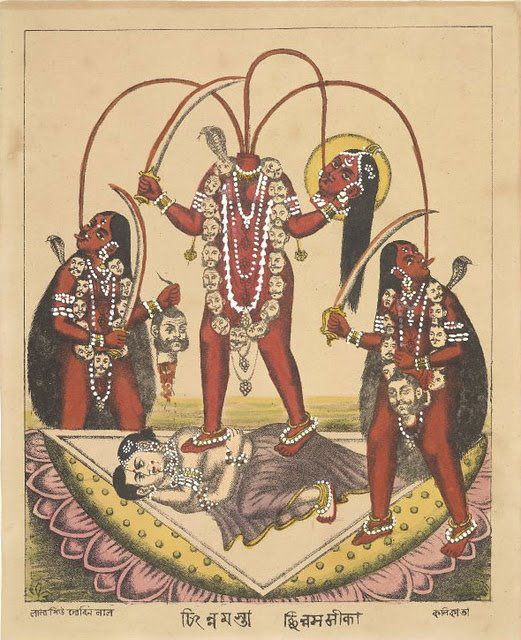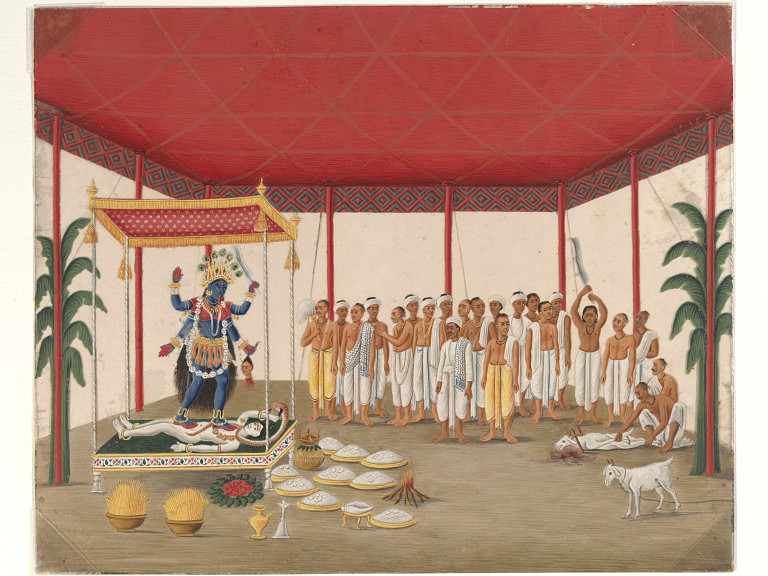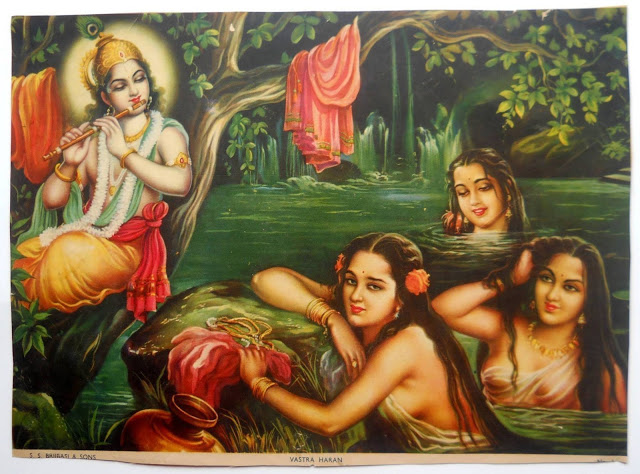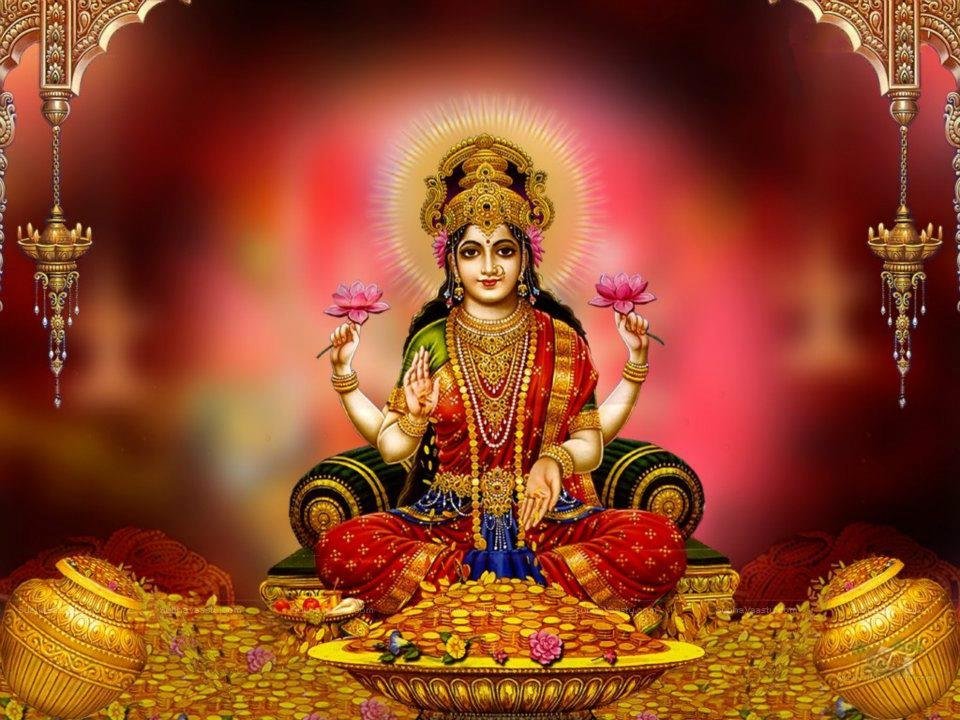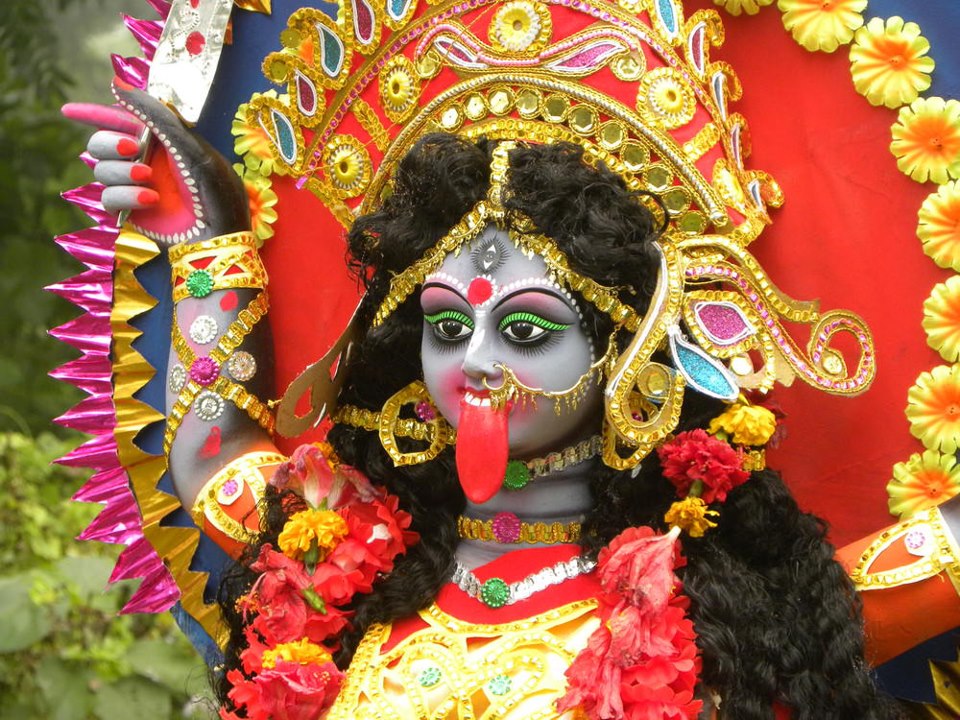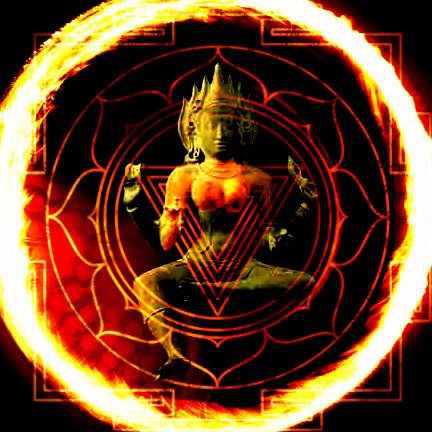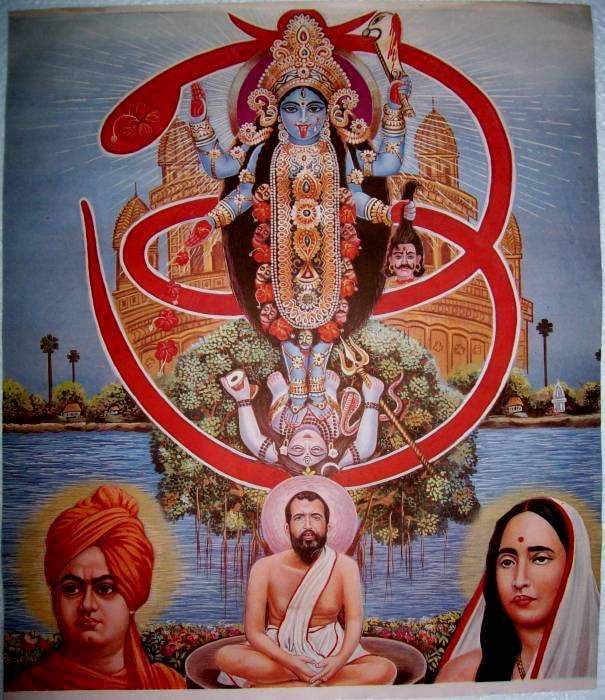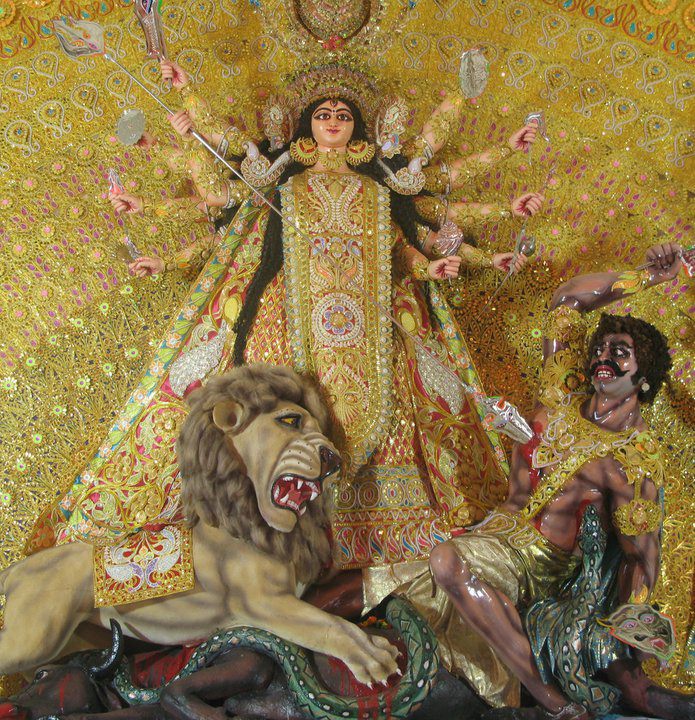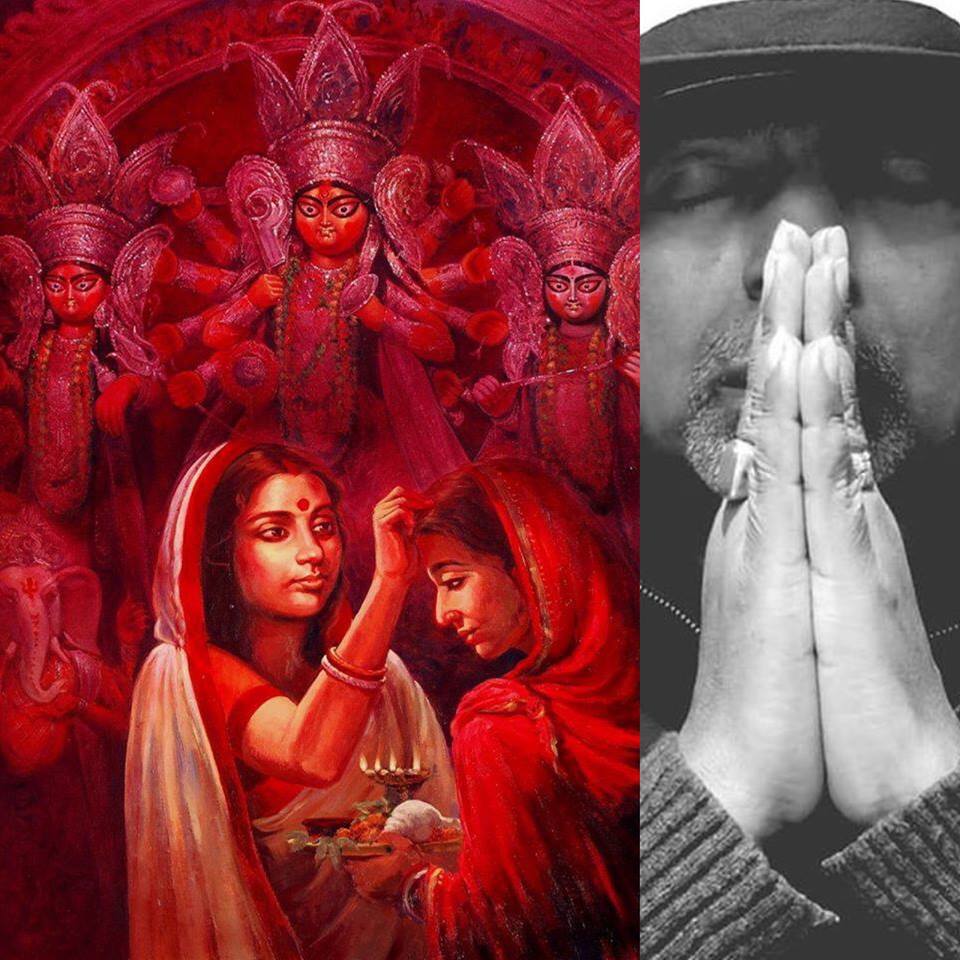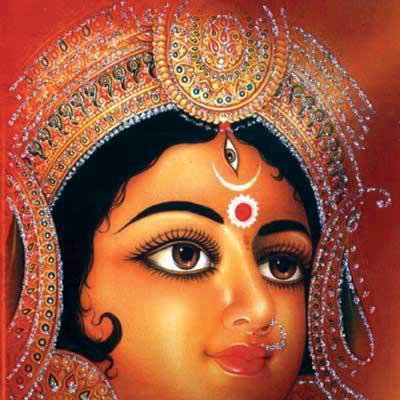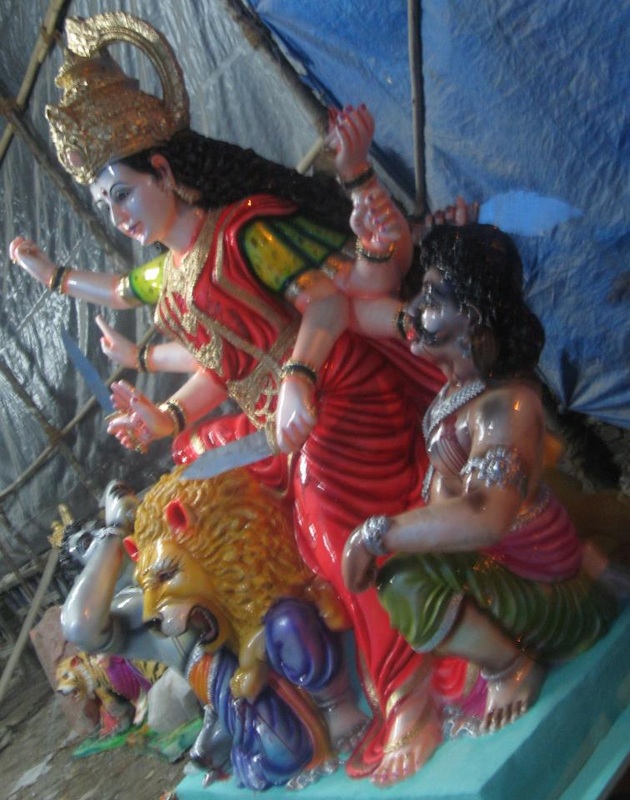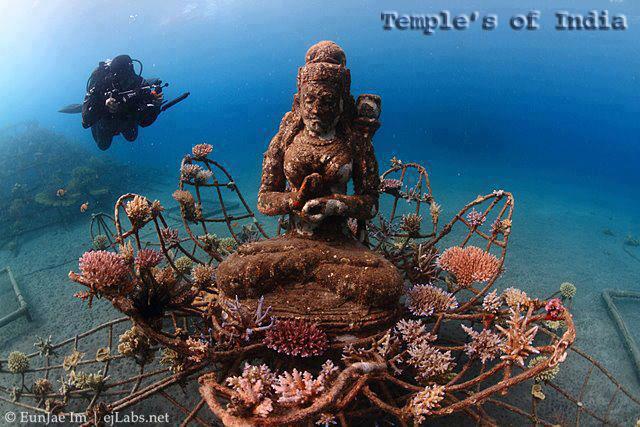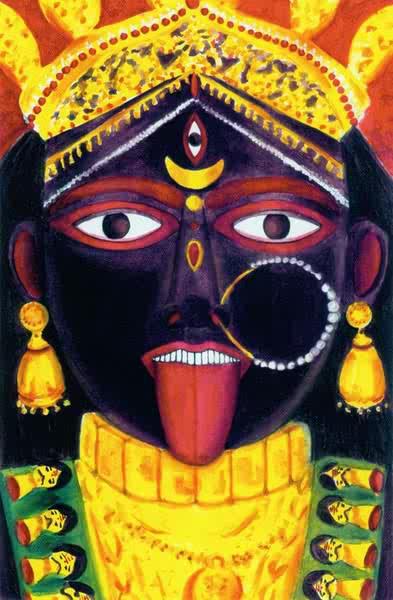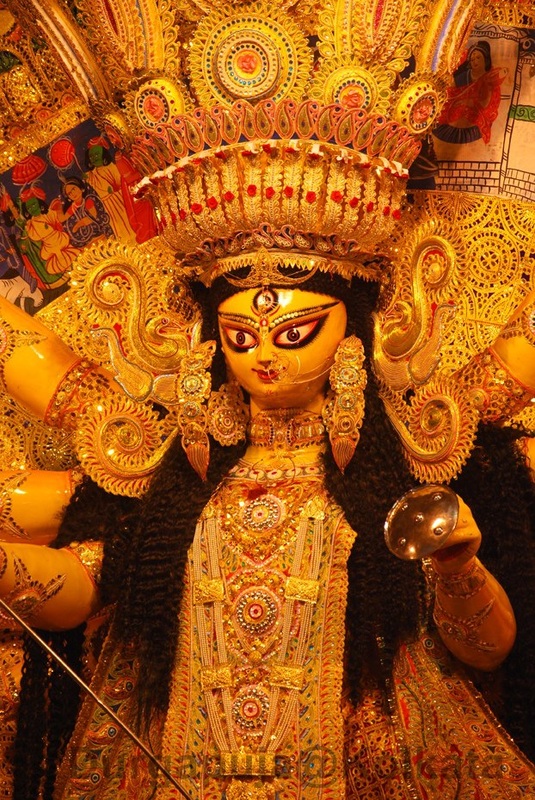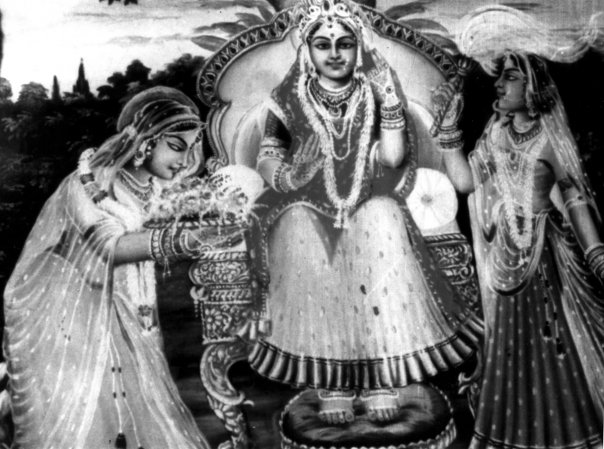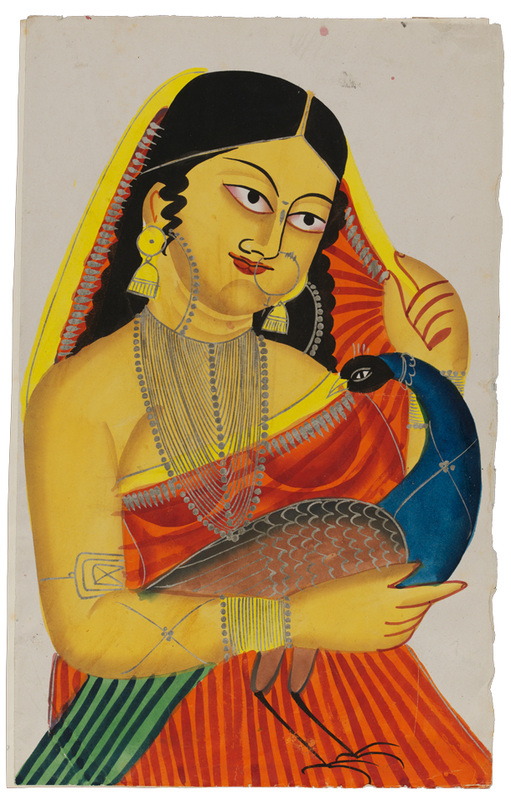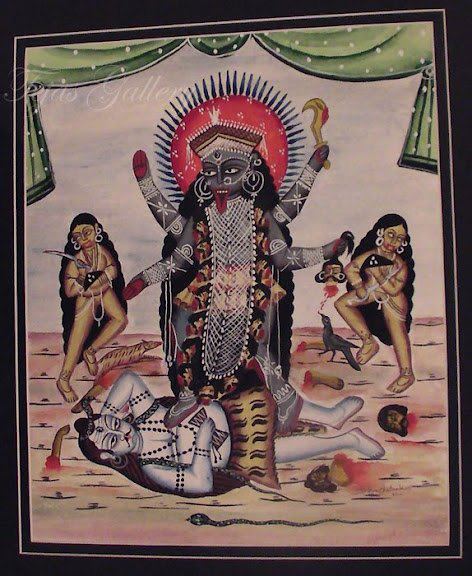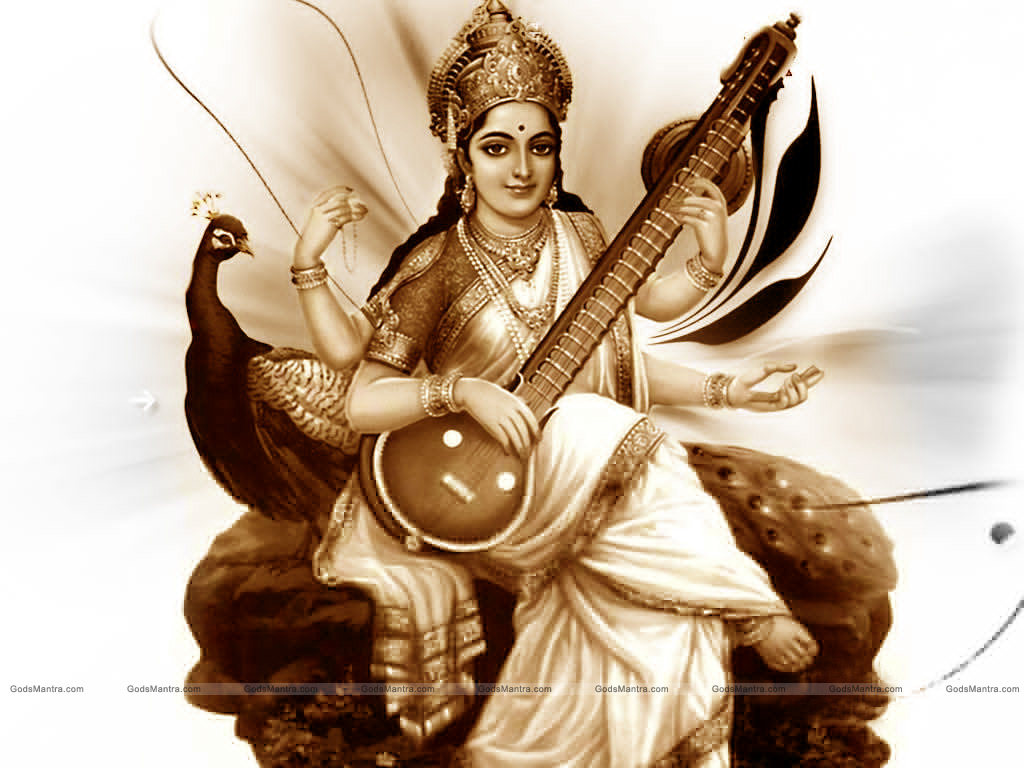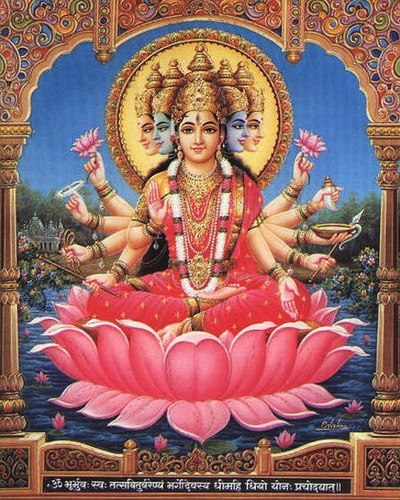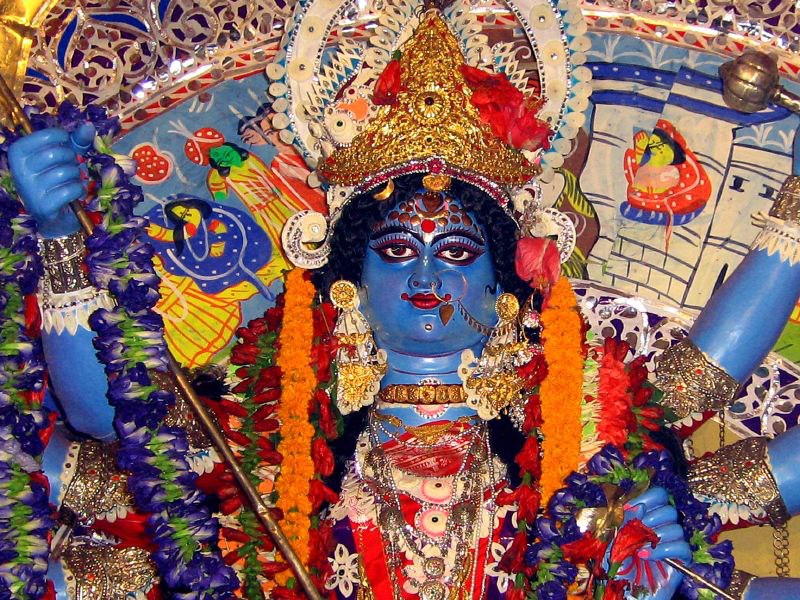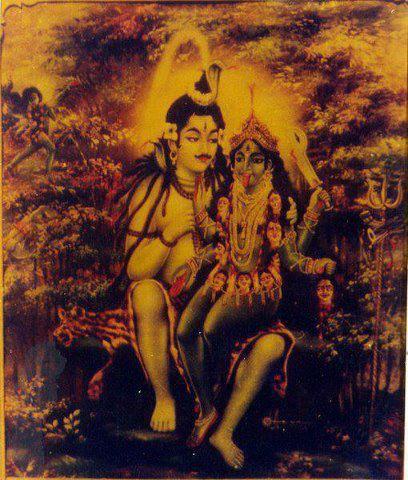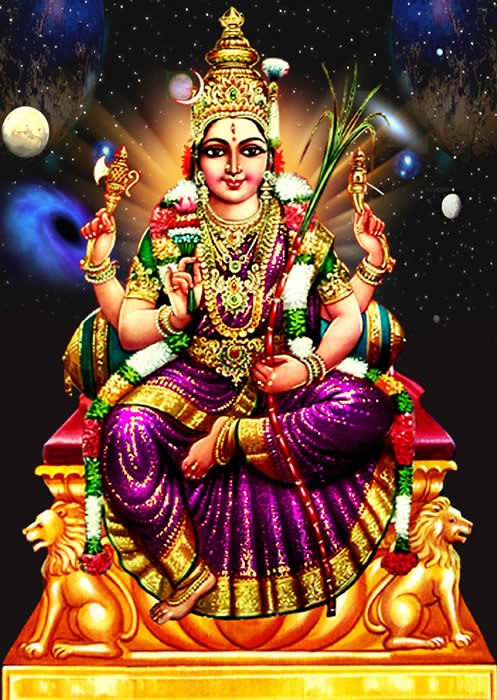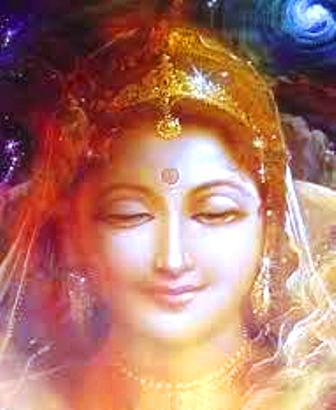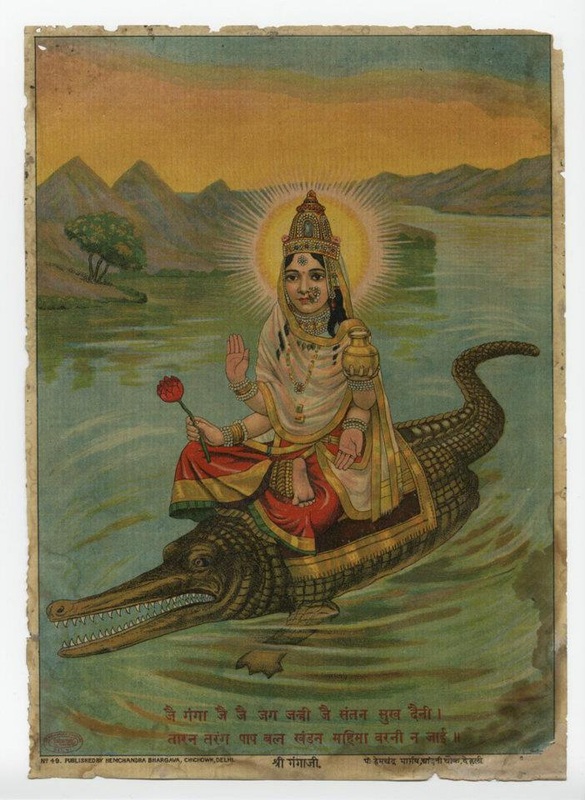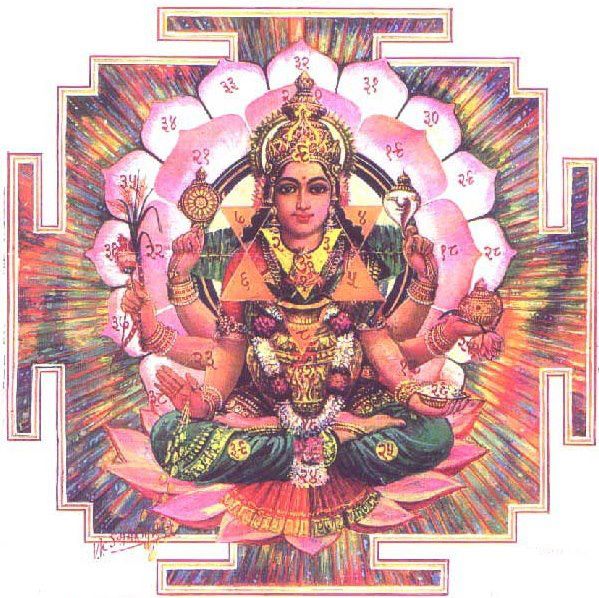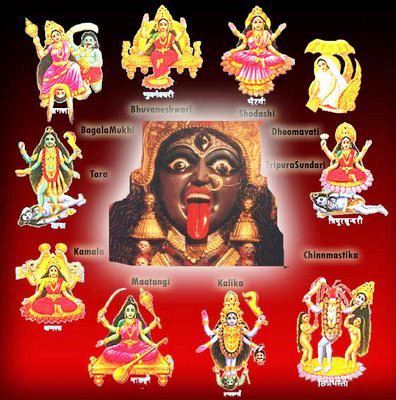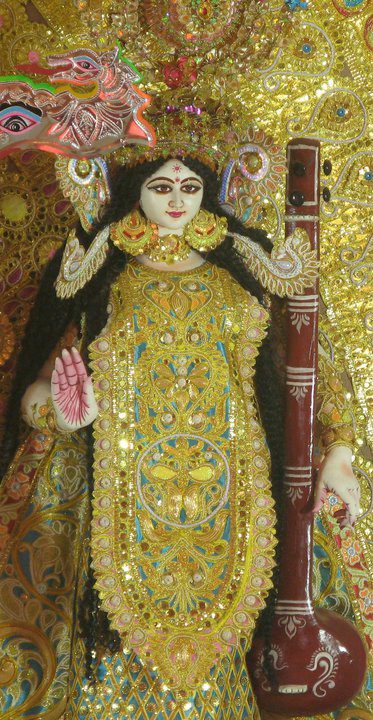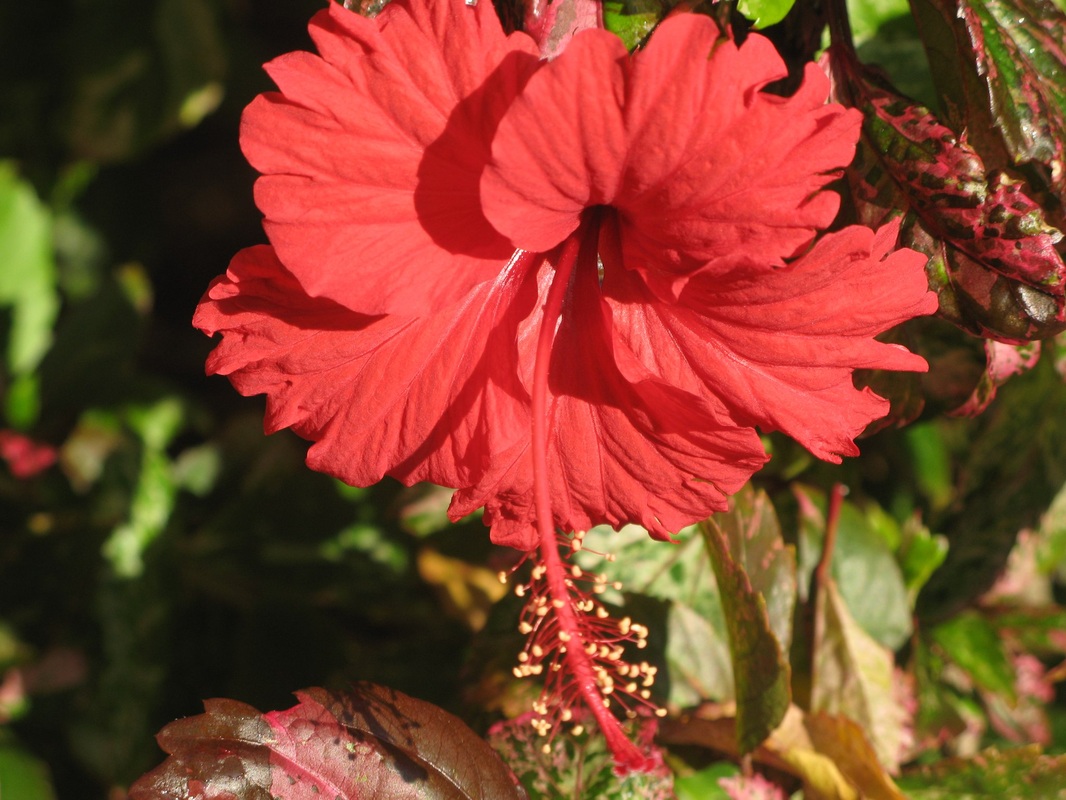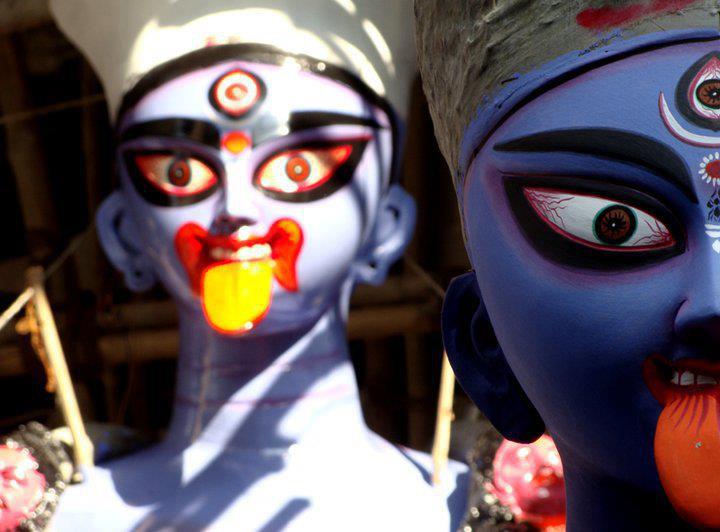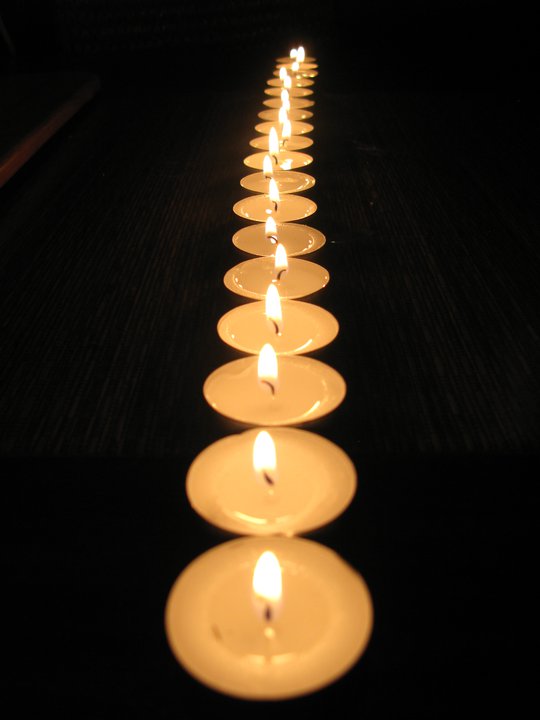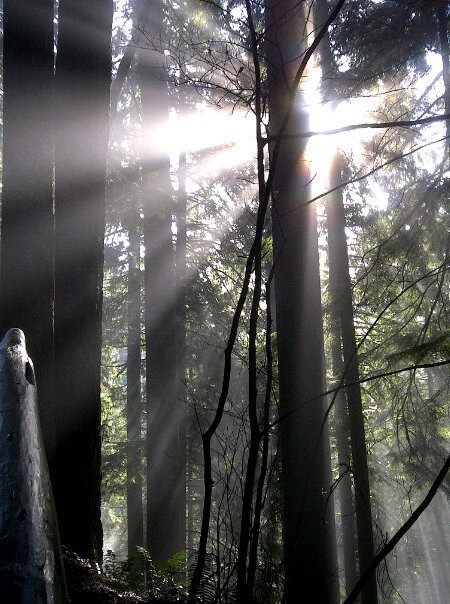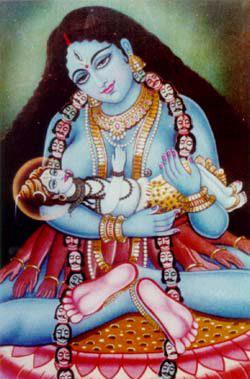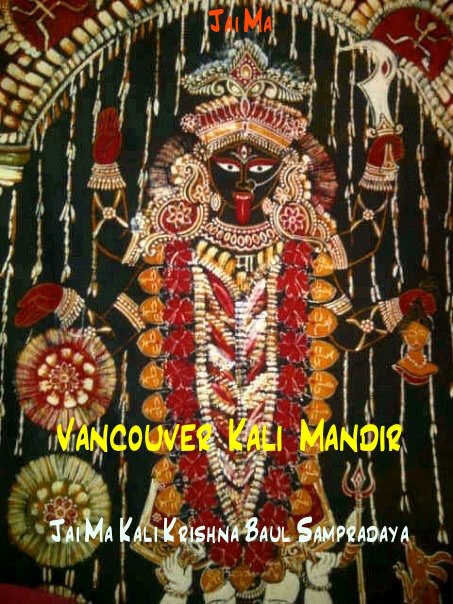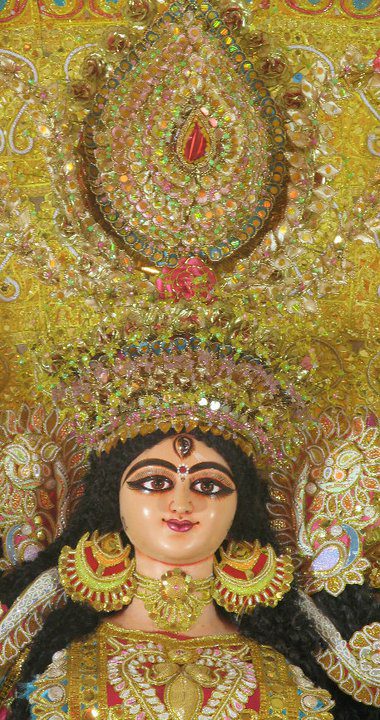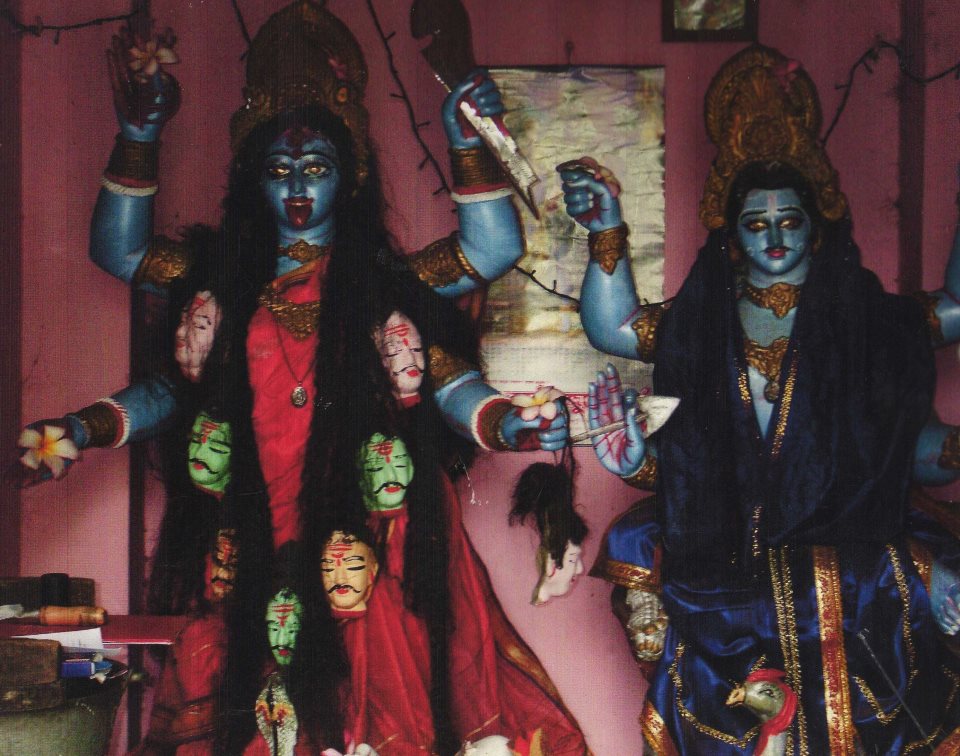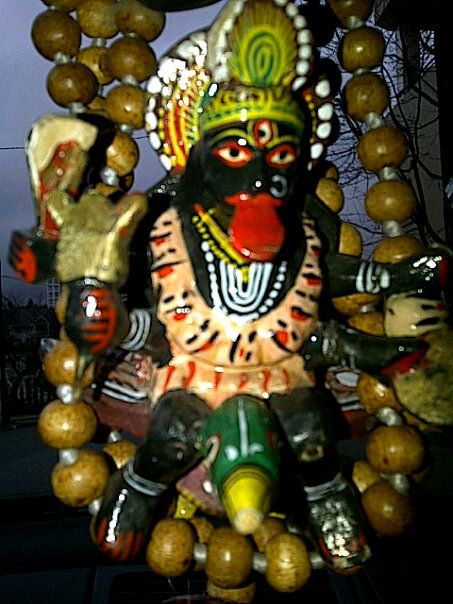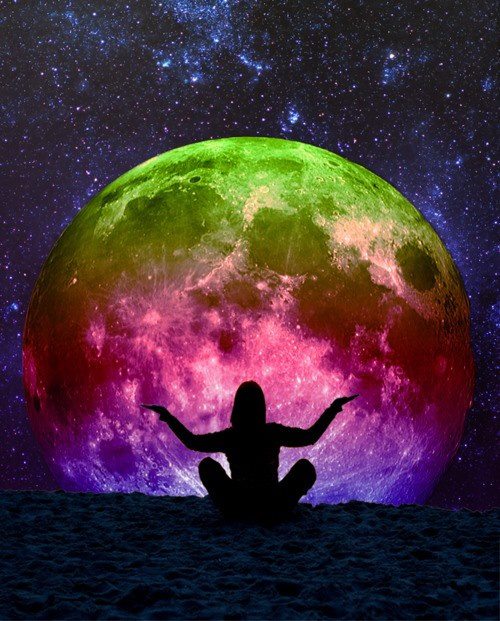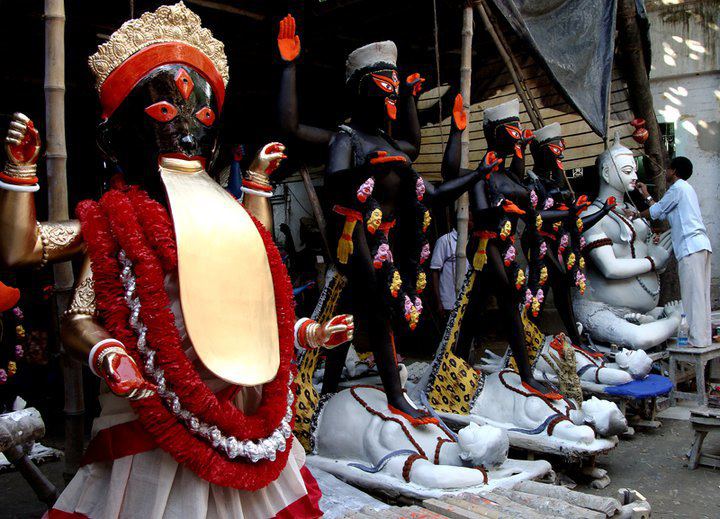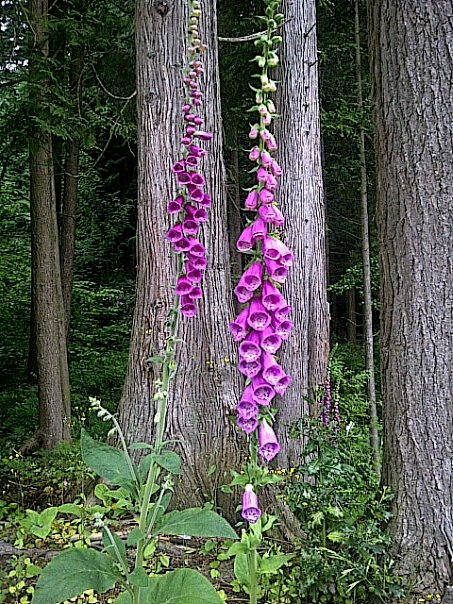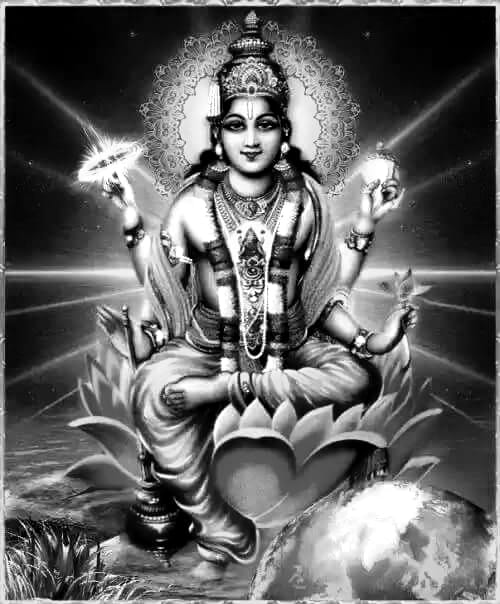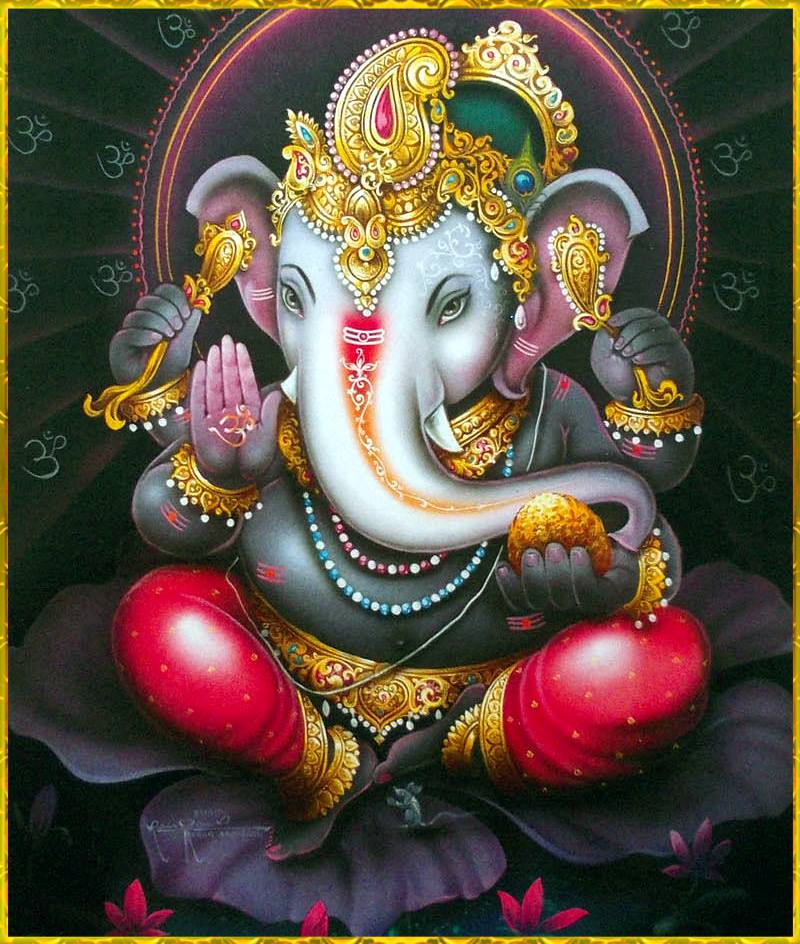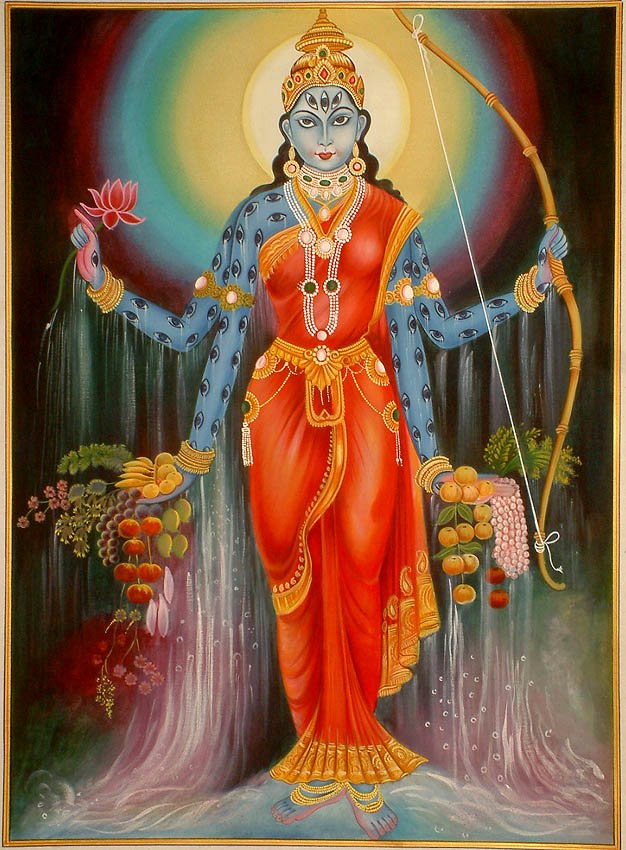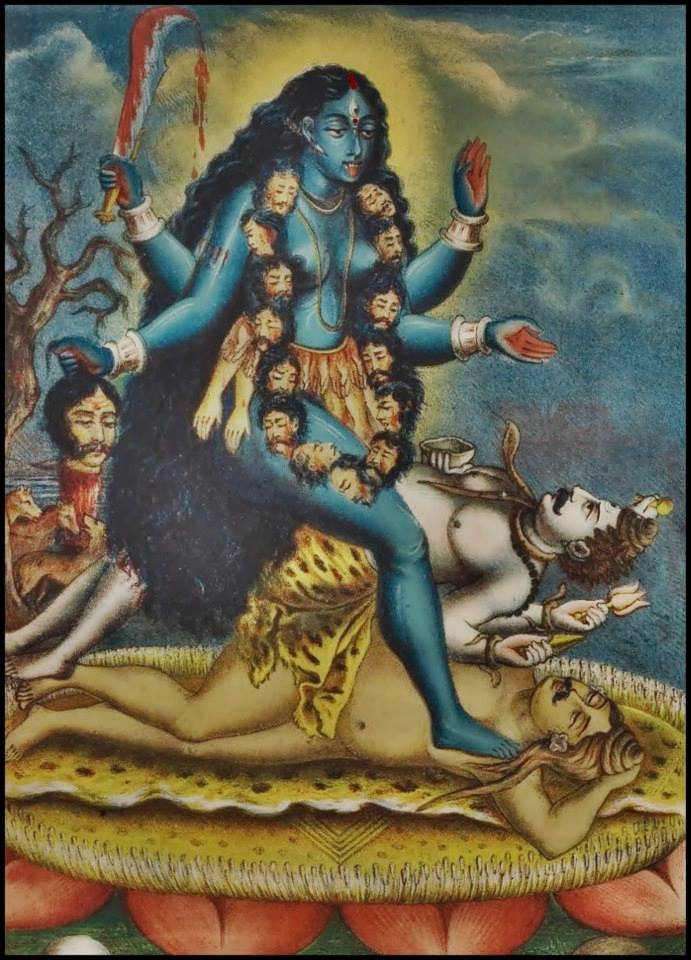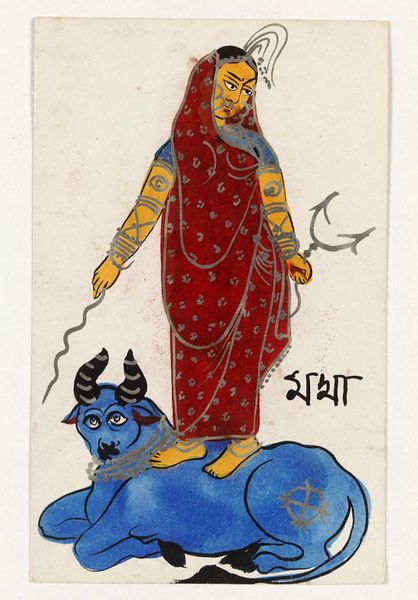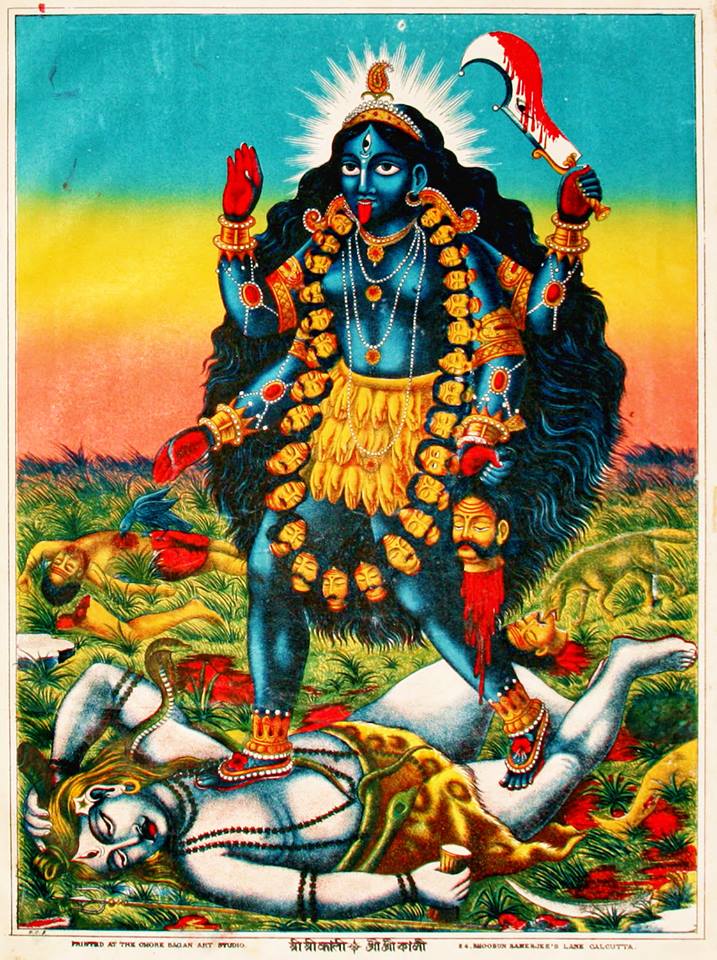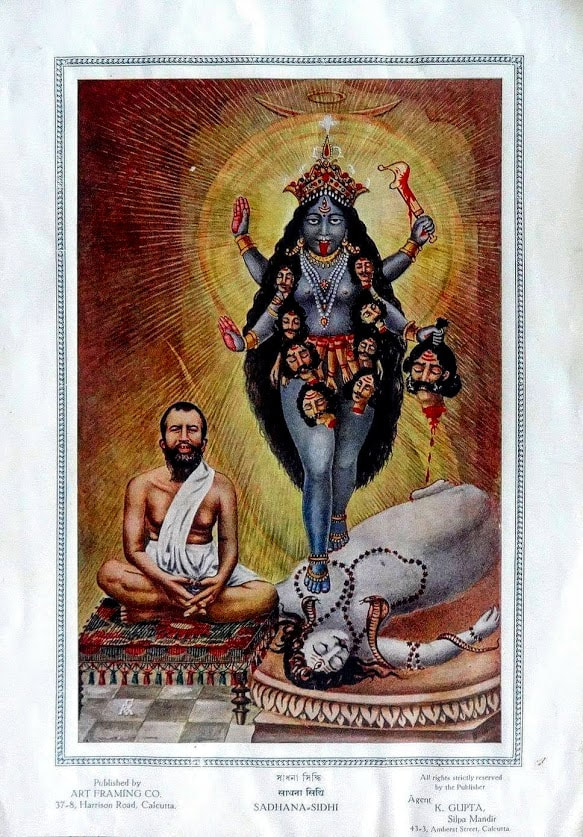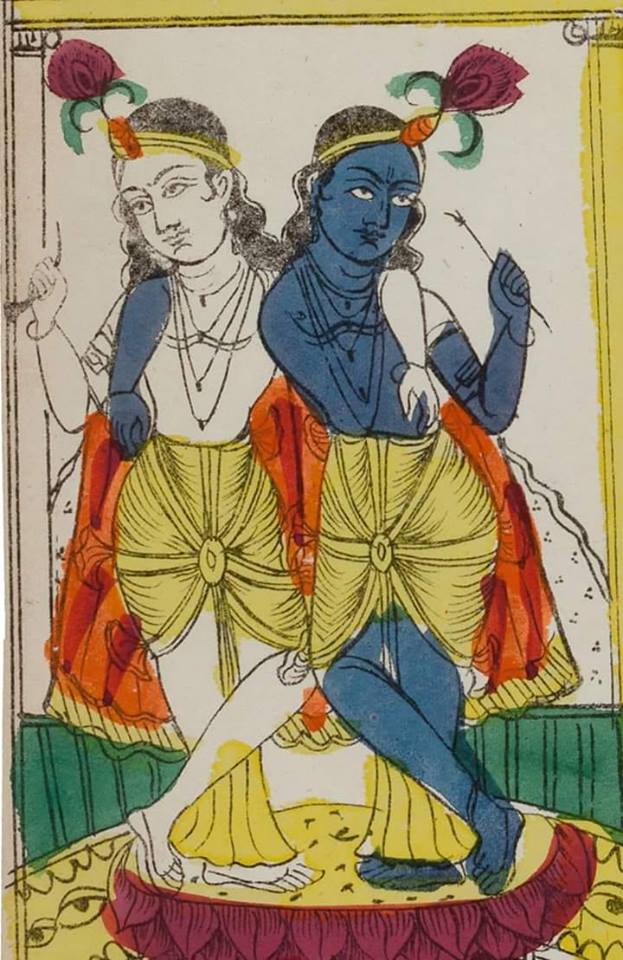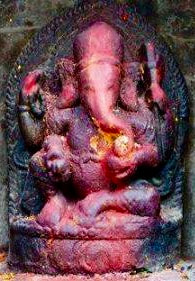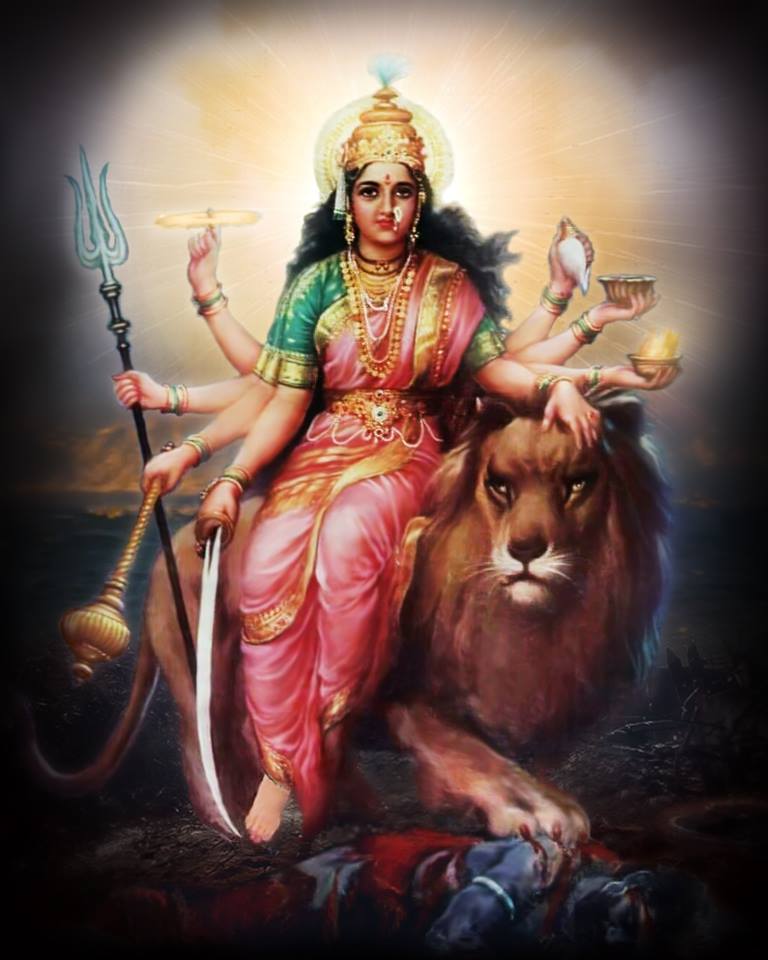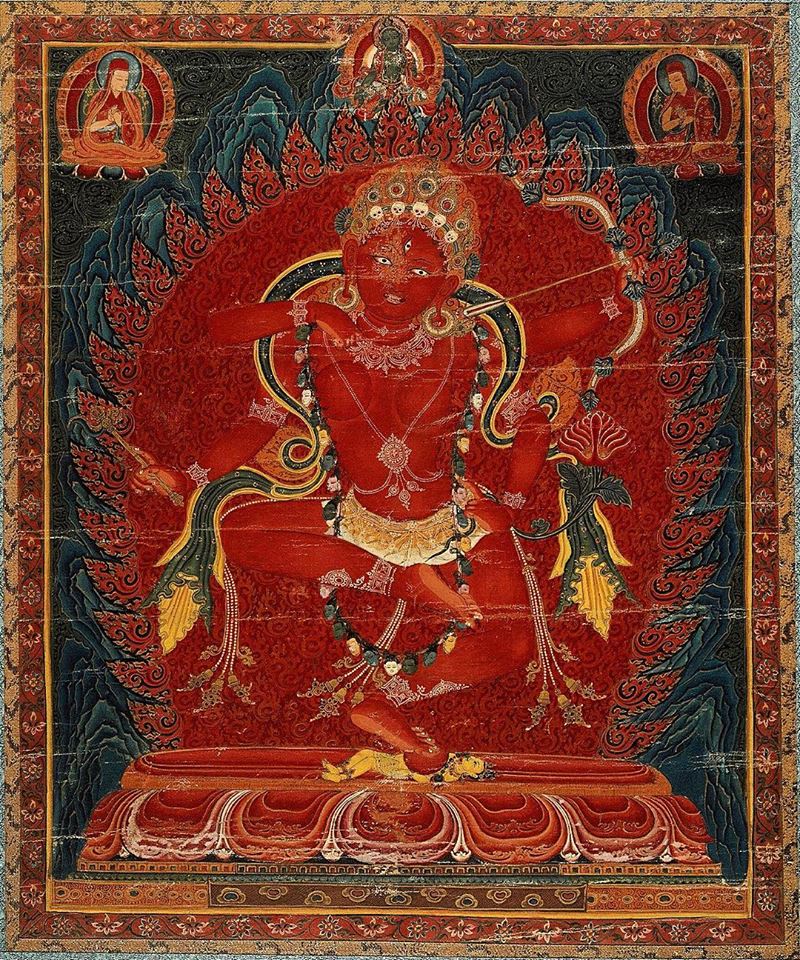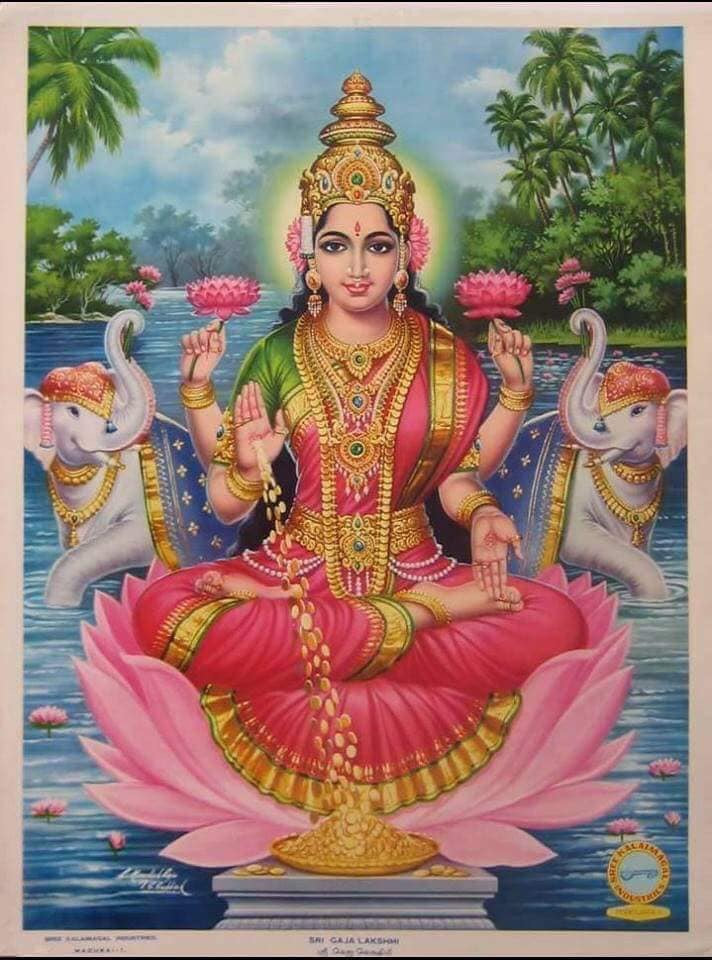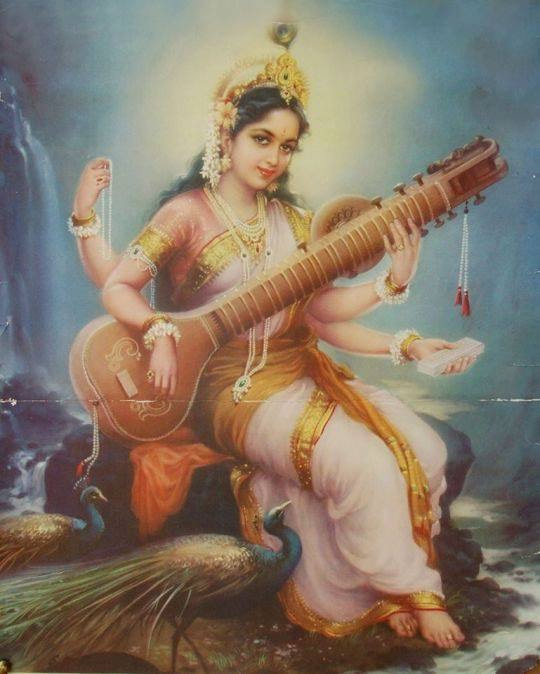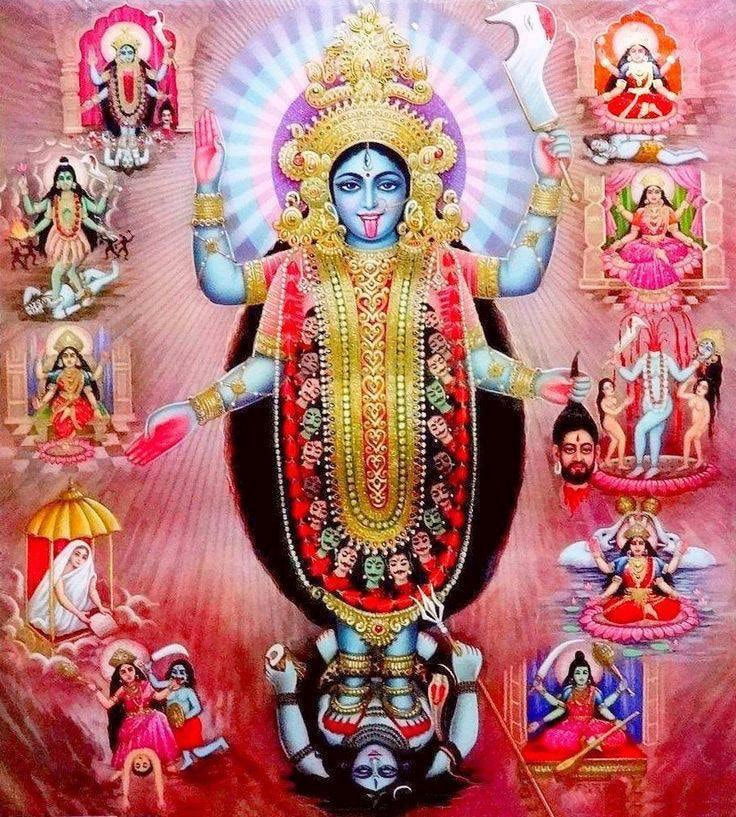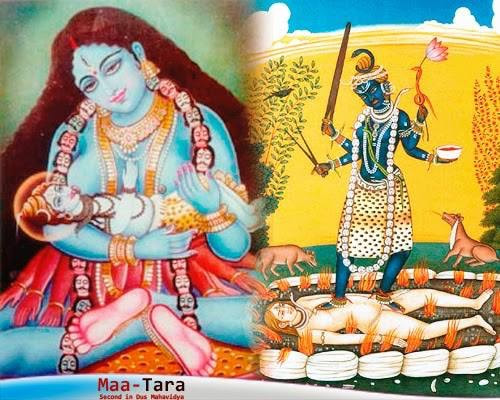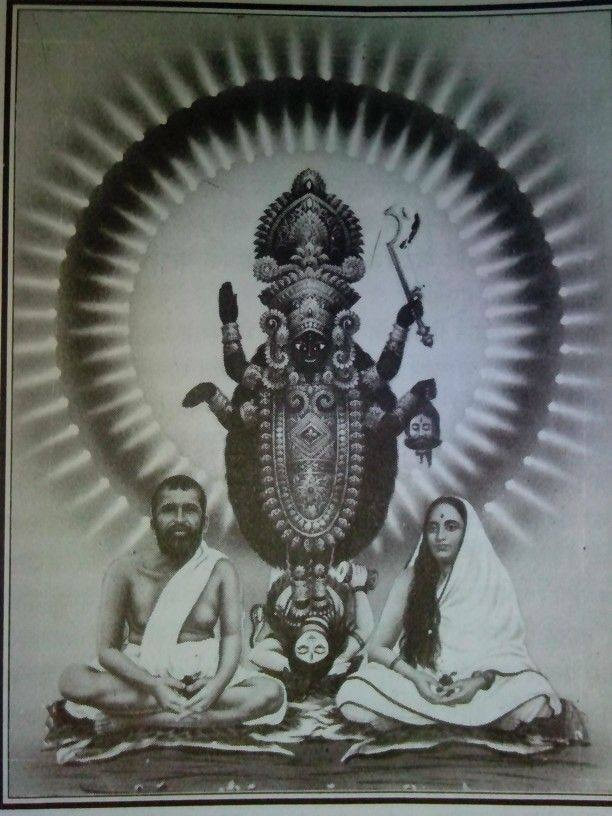|
Ganga is visualized in Indian thought as a virtuous, but mischievous and restless maiden, just as many young lasses are. She followed Brahma's diktat to descend to earth, but couldn't playfully resist the unwarranted and undeserved feeling that she could sweep away even the mighty Shiva in her forceful current. Shiva, gauging her thoughts, decided to teach her a lesson. Spreading open his serpentine coils of hair, he covered the entire sky, and collected all the waves of Ganga in his outspread locks.
Then with a mighty swoop, he collected his hair, tied into a neat and tight bun, and captured Ganga in the infinite swirls and whirls of his hair. Ganga still flowed with tremendous force, but could not escape, and remained imprisoned and confined inside Shiva's hair. Bhagiratha, perplexed at the happenings, appealed to Shiva to release Ganga, so that she could wash away the sins of his ancestors, symbolized in their mortal remains. Shiva relented, and in any case Ganga had learnt her lesson. Thus Ganga again followed Bhagiratha, who showed her the way. But there were still more adventures to come. Just near their ultimate destination lay the hermitage of another accomplished sage, known as Jahnu. Ganga, ever the playful maiden, hurried over to what she perceived was a new and curious place. And lo, barely had she entered upon the precincts of the ashram (hermitage), that it became flooded, and all sacrificial fires were extinguished. The ritual utensils and tools were washed away, and the inhabitants of the sanctuary became frightened and anxious. The leader of the ashram, sage Jahnu, became livid at Ganga's intrusion. He then chanted a mantra, and took a sip of the water flowing all around his hermitage. With the power of his mantra, he swallowed away Ganga with all her waters. All traces of Ganga were gone. Bhagiratha was in a fix. No sooner had he overcome one hurdle, than another was created, mostly due to the impulsiveness and restlessness of Ganga. He hurried over to Jahnu, and explained to him the magnitude and significance of the task he was out to accomplish. Jahnu gave him a sympathetic hearing and appreciated his hard work in bringing Ganga to the earthly realm. Consoling Bhagiratha, he said: " For you, I will release Ganga immediately," and saying this, he made a cut in his left thigh, and the waters of Ganga flew out like a fountain. Hence did Ganga came to be known as Jahnvi, the daughter of sage Jahnu. Thankfully, the rest of the way was without any further adventures, and Bhagiratha successfully showed Ganga the way to the ashes of his ancestors. As soon as Ganga touched the ashes, the ancestors arose, glowing forth in their astral bodies, and ascended towards heaven. Carrying away their mortal remains, Ganga merged into the ocean, which hitherto had been dry. From that day onwards, the ocean came to be known as 'Sagara,' in honor of the king who started it all in the first place. The place where Ganga merged in the ocean, came to be known as Ganga-Sagar, and to this day, a great festival is held here every year, to celebrate Ganga's birthday, or the day when she came to earth. This occasion is knows as Ganga Dassehra. This legend makes amply clear that Ganga's purity and auspiciousness springs in no small measure from her proximity to various important divinities and holy sages. Falling onto Shiva's head, where she meanders through his tangled locks, the mighty Ganga appears in this world after having been made more sacred by her direct contact with Shiva, and also the accomplished ascetic Jahnu. The river then spreads the divine potency of these hallowed personalities into the world, when she flows into the terrestrial realm. Ganga's fall from heaven is replicated daily in the millions of Hindu temples where the water of the Ganga river is poured over the sacred Shiva Linga. Here it is important to note that the linga of Shiva is often thought of as incandescent pillar of fire. By cooling the linga with her soothing waters, Ganga is in a sense saving the world from Shiva's fiery linga, whose extreme heat could destroy all life on earth. Bearing her on his head, Shiva becomes the facilitator for Ganga's smooth fall to the earth. But if Shiva saves the world from the power and force of Ganga's torrent, it is also Ganga, who in a similar manner, saves us from Shiva's scorching powers of destruction. Babukishan is from the Ramakrishna Mission In Calcutta: Today is a auspicious Solar Eclipse Day do Sadhana and use this time to pay off your karmic debt and the karmic debt of the planet.. The New Moon today which also fall on an the auspicious day of Phalaharini Kali Puja it is very significant in the Ramakrishna-Vivekananda Tradition.It was on this holy day, nearly 140 years ago, Sri Ramakrishna worshipped the Holy Mother, Sri Sarada DEVI, as Shodashi. In 1872, on the night of the Phala-harini-Kali-puja, he ritualistically worshipped Sarada Devi as the Divine Mother, thereby awakening Universal Maaaa that was latent in her. When disciples began to gather around Sri Ramakrishna, Sarada Devi learned to look upon them as her own children. The room in which she stayed at Dakshineshwar was too small to live in and had hardly any amenities; But she bore all difficulties silently and lived in contentment and peace, serving the increasing number of devotees who came to see Sri Ramakrishna. The Puja is performed at every RamaKrishna Math. "It was the new moon night, an auspicious occasion for Phalaharini Kali Puja. This special festival is also observed in the Kali temple of Dakshineswar. The Master (Sri Ramakrishna) made a special arrangement for privately worshiping the Divine Mother as Shodashi in his room rather than performing it in the temple. At the right side of the worshiper's seat, a low wooden sear, beautifully painted with rice powder pigment, was placed for the goddess to sit on during worship. The sun had set and the new moon night arrived in a veil of deep darkness. Hriday was performing the worship in the Kali temple that night, so he helped with the preparations for the Master's worship as much as possible and then left for the temple. After the priest Dinu had finished the evening worship service in the Radha-Govinda temple, he came to help the Master prepare for the worship, and then he left. It was 9:00 in the evening when the preparation s for the mystical worship were complete. The Master had sent a message to Sarada beforehand to be present during the worship, and now she arrived in the Master's room. The Master sat for worship. The Master finished the preliminaries and sanctified the articles of worship by repeating the mantras. He then beckoned for Sarada to sit on the decorated wooden seat. While she was watching the worship, Sarada had already entered a semiconscious spiritual state. So without fully knowing what she was doing, she moved like one who is spellbound and sat facing north on the right side of the Master, who was seated facing east. According to the scriptural injunctions, he repeatedly sprinkled sanctified water on her from the pitcher placed in front of him. He then uttered mantras and invoked the deity with the following prayer: "O Divine Mother Tripurasundari! O Eternal Virgin, possessor of all power! Please open the gate of perfection. Purify her body and mind, and manifest Yourself through her for the welfare of all." Then he performed the ceremony of nyasa in accordance with the injunction of the scriptures, and worshiped Sarada with sixteen items as a veritable manifestation of the Devi. After offering food, he took some of it and put in in her mouth. Sarada lost outer consciousness and went into samadhi. While uttering mantras in a semiconscious state, the Master also wend into deep samadhi. Thus, the worshiper and the worshiped became fully united and unified in the Atman, the Existence-Knowledge-Bliss Absolute. Some time passed in this way. It was long after midnight when the Master gradually regained partial consciousness of the world. Inn that semiconscious state he offered himself to the Devi manifested in the person of Sarada, and then forever surrendered at her feet himself, the result of his sadhana, his rosary, and everything else. He then bowed to her with this prayer: "O Consort of Shiva, the most auspicious of all auspicious beings! O Doer of all actions! O Refuge of all! O three-eyed goddess of golden complexion! O Power of Narayana, I salute You again and again." The worship was completed. The Master's sadhana culminated in this worship of the Divine Mother in the body of a woman who was an embodiment of spiritual wisdom. Both his divine and human aspects had archived ultimate perfection. But I can assure you Babu is from the Ramakrishna Mission and he introduced these people to the Ramakrishna mission In Calcutta ... where everything is copy and paste even book written about Kali..with no thanks or acknowledgment to Babu...... this is the way!! 1) Durga Shailputri:
Shailputri means the daughter of the mountain, Himalaya. In this form we see the divine Mother holding a trident in her right hand and a lotus on her left. She is seen seated on an ox. In her previous birth, she was called Sati, Bhavani and was the daughter of King Daksha. After a lot of penance, she married Lord Shiva. But her father King Daksha was not too pleased. He had arranged for a Yagya/Yagna (Ritual done around the sacrificial fire) where he invited everyone except his son-in-law, Lord Shiva. Upset and feeling humiliated, Sati decided to attend the event uninvited. There, her father insulted Lord Shiva and in fury she stood on the sacrificial fire and burnt herself alive. Lord Shiva enraged, ordered his followers to demolish the Yagya. Sati was reborn as the daughter of the king of the mountains, Himalaya in the name of Parvati – Hemvati and got married with Lord Shiva again. Her this Swaroop is worshipped on the first day of the Navratri celebrations. 2) Brahmacharini: Brahmacharini or Tapasyacharini is Goddess’s second form. The name holds the meaning of true penance and meditation. Her form depicts her holding a rosary beads in her right hand and a Kamandalu, a pot containing holy water in her left. In her previous life, when she was reborn as the daughter of Himalaya, she performed severe penance to have Lord Shiva as her husband. Narad Muni, the divine sage advised her to take up meditation to win Him. Her intense devotion, steadfastness and strict meditation for years under extreme conditions, gave her the name of Brahmacharini. 3) Chandraghanta: Goddess Durga’s third form is known as Chandraghanta or Shakti. Chandra means moon and Ghanta is the bell. This name finds its explanation in the half-circular moon on the temple of the Goddess that resembles a bell. She is three eyed with ten hands. Each hand holds ten different weapons. She is seated on lion and is worshipped on the third day of the Navratri celebration. Her hue is golden and her appearance always spreads a calm and eternal peace all round. She is unprecedented image of bravery. The frightful sound of her bell terrifies all the evil and demon. Worship of this deity helps to eliminate the sorrow, hazards and dangers in ones life. 4) Kushmanda: Kush means happiness and she created the universe with a smile. She is radiant as the Sun and rides a lion. She is Ashtabhuja or eight handed. Her seven hands hold the holy pot, Kamandul, a bow, an arrow, a lotus, a pot containing wine, a disc and a club. The eighth hand holds a string of rosary beads that is believed to provide success and prudence. 5) Skanda Mata: Lord Kartik/Kartikeyan/Karthikeyan is also known as Skanda. As Goddess Durga is his mother, she is referred to as Skanda Mata. She is a deity of fire with four arms. She holds her son Skanda with the top right hand and lotus in her lower hand. The top left hand is positioned in a blessing gesture or Abhaya Mudra. She is fair complexioned, seated on a lotus and so also referred to as Padmasana. 6) Katyayani: Sage Katyaayan was the son of the great sage Kat. He observed rigorous penance and worship of Bhagavati Paramba with a desire to get Paramba as his daughter. His wish was granted. The daughter born was named Katyayani. She has four hands. The top right hand is positioned in a gesture of providing courage while the other hand is positioned in a gesture of rendering a boon. The top left hand holds a sword and the other a lotus. The goddess rides a lion and worshiped on the sixth day of the Durga puja. 7) Kalratri: Ratri means night so her complexion is as dark as the night. She has long, unmated hair with her three eyes that are shiny and bright. She has four arms and is seen mounted on a Shav/Shava or dead body. Her right hand holds a sword, while her lower hand is in a blessing stance. The left hand holds a burning torch and the lower left hand is in fearless position. She is known as Shubhamkari or the auspicious one. Her form encourages her devotees to be fearless. 8 ) Maha Gauri: It is said that when the body of Goddess Gauri got dirty due to dust and earth while she was observing penance to attain Lord Shiva. So he cleansed her with the holy waters of Ganges. Her body transformed into bright and luminous like lightening and so her eighth form is known as “Maha Gauri” .Her clothes and ornaments are also white. Her visage is calm and peaceful and she is three eyed. She rides on a bull. Her four hands denote different meanings, like the left hand is in the fearless gesture and the lower on holds a trident. The above right hand has tambourine and lower right hand is in blessing style. 9) Siddhidatri: The ninth form is Siddhidatri. There are eight Siddhis (Special powers which can only be attained from severe penance and meditation)-Anima, Mahima, Garima, Laghima, Prapti, Prakamya, Iishitva & Vashitva. Maha Shakti gives all these Siddhies. It is mentioned in the Devi Puran” that Lord Shiva got all these Siddhis by worshipping Maha Shakti. With her gratitude, Lord Shiva’s body also contains the Goddess and so he has the form and name of Ardha Narishvar. Ardha means half. The goddess rides on a lion. The Siddhidatri form is worshipped by all gods, rishis, munis (Saints and Sages), siddhas, yogis, sadhakas (Devotees) for attaining merit and boons of their severe penances. Why do we not touch papers, books and people with the feet?
To Indians, knowledge is sacred and divine. So it must be given respect at all times. Nowadays we separate subjects as sacred and secular. But in ancient India every subject - academic or spiritual - was considered divine and taught by the guru in the guru kula. The custom of not stepping on educational tools is a frequent reminder of the high position accorded to knowledge in Indian culture. From an early age, this wisdom fosters in us a deep reverence for books and education. This is also the reason why we worship books, vehicles and instruments once a year on Saraswathi Pooja or Ayudha Pooja day, dedicated to the Goddess of Learning. In fact, each day before starting our studies, we pray: Saraswati namasthubhyam Varade kaama roopini Vidyaarambham karishyaami Sidhirbhavatu me sadaa O Goddess Saraswati, the giver of Boons and fulfiller of wishes, I prostrate to You before starting my studies. May you always fulfill me? Sita Ram Das Omkarnath was a well known Bengali Saint, he was closely associated with Ananada Mayi Ma and Babu's grandfather Baul Saint Nabani Das Khyappa Baul, he was a Guru to Babu's father Baul Samarat Purna Das Baul, and Krishnendu Das Baul aka KD Babukishan loved SitaramDas Omkarnath dearly. These Bengali's knew each other and were all legendary devotee's of Maa and Krishna.
Jai Ma. Ma is perhaps one of the oldest mantra's, all manifestations are Maa, she is the grace that gives life, love and nuturing. Ma takes us from our first breath and breathes us all of our life. She is kundalini shakti, the power in all.. Ma is inclusive she is there for everyone, she is the love that take us to her Love the Great Lord Shiva. The people of Indian have known this blessing from the beginnings of time. Jai Ma (Victory to Shakti) is the Mahamantra that brings her grace, the planet is in deep need of her Grace at this time.. Jai Ma Jai Ma Jai Maaaaaaaaa please forgive us, please help us...show us the way Maaaa, please give us pure Love Maaaaa. Baba a teacher of mine told me if I am going to ask for anything, only ask for Pure love which is Maa.... Love heals all, Maa is the remedy for all.. Maaa Love is the remedy. Maaa Love is the healer. Jai maaaaa The primordial word of the planet is maaaa! In the context of spiritual life, Ma is known as Kundalini who takes Her child on Her lap and proceeds towards the absolute ocean. None can refrain from singing Her holy name, hence, Ma is the universal maha-mantra of togetherness. Be it Vaishnava, Soura, Shaiva, Shakta, Ganapatya, irrespective of the spiritual lineage, a devotee should take shelter in this maha-mantra. Even the Christians and the Muslims can sing Her pious name, Jai Ma. Ma is a mono-syllabled maha-mantra and is not merely a word to address the Mother. One who chants the Naam, Ma will soon be blessed with Her divine grace.” by Sri Sri Sitaramdas Omkarnath A simple Baul song from Babukishan's Lineage, although simple, Baul is an oral living lineage there are discourses of Yoga, Tantra and Indian Philosophy that go with this simplicity.
The Bauls are lovers of the Feminine Divine ,Devi, Maa, there is no Krishna without Radha, women are the beloved in this Tantric Shakti tradition of Bengal. This song is telling the Sadhaka if you want to reach enlightenment learn to be like a women. Jai Maa Happy Navaratri. O mon amar, Shajo Prakriti Prakritir shobhab dhoro, sadhan koro Dekhbi urdho hobe deher goti Mon amar shajo Prakriti … "SO my spirit, dress like nature, Learn to be a woman, Acquire spiritual knowledge, You’ll find that the pace of your body Will quicken again, O my spirit, dress like nature." Nabani Das Khyapa Baul poetry, Brajabala Dasi his wife used to sing this to Babu Kishan aka Krishnedu Das Baul when he was a baby to calm him down. Babu Kishan is the first person to record this song made famous by his father Purna Das Baul. Article credit goes to DR KK Debnath http://www.esamskriti.com/essay-chapters/Shakti-Peethas-%28Tantra-Peethas%29-of-India-1.aspx Shakti Peethas (holy places of cosmic power) are places of worship consecrated to the goddess 'Shakti', the female principal of Hinduism and the main deity of the Shakta sect. They are sprinkled throughout the Indian subcontinent. This goddess is often associated both with Gowri / Parvati, the benevolent goddess of harmony, marital felicity and longevity, with Durga, goddess of strength and valour, and with Mahakali, goddess of destruction of the evil. Legend According to legend, at some time in the Satya Yuga, Daksha performed a yagna (named Vrihaspati) with a desire of taking revenge on Lord Shiva. Daksha was angry because his daughter Sati had married the 'yogi' God Shiva against his wishes. Daksha invited all the deities to the yagna except for Shiva and Sati. The fact that she was not invited did not deter Sati from attending the yagna. She had expressed her desire to attend to Shiva who had tried his best to dissuade her from going. Shiva eventually allowed her to go escorted by his ganas. But Sati, being an uninvited guest, was not given any respect. Furthermore, Daksha insulted Shiva. Sati was unable to bear her father's insults toward her husband, so she committed suicide by jumping into the yagna fire. When Lord Shiva heard about her death he became furious. He went to the place where Daksha was performing his oblation, along with his ganas (followers). The oblation site was destroyed and Daksha was killed by his ganas . Lord Shiva then carried the dead-body of Sati and started wandering all over the place like a lunatic. Lord Vishnu severed the dead body with his chakra. Various organs fell at different place. These places became famous as Shakti-Peeth, in due course of time. The 52 Shakti Peethas In order to view the index, which is based on Tantra-Chudamani , reveals as to which organ fell at which place and which Bhairav and which Shakti have their dwellings at which place, The names of Bhairavs are not mentioned in other books except Tantra-Chudamani . All the Shakti-Peeths have secondary deity as Bhairav, besides the primary deity- Shakti. While having a darshan of Shakti-Peeth, a devotee should also have a darshan of Bhairav. Locations 1). Hingula (Hinglaj) Devi’s mind or brain fell here and the idols are Devi as Kotari (Durga) and Shiva as Bhimlochan (Terrible eyed or the third eye). The location is towards 125 km from Karachi, Pakistan. 2). Sharkarare or Karavipur Devi’s three eyes fell here and the idols are Devi as Mahishmardini (Durga the destroyer of Mahishashur) and Shiva as Krodhish (the one who can be angry). It is near Karachi in Pakistan, by rail the nearest station is Parkai. 3). Jwalamukhi, Kangra, Devi’s tongue fell here and the idols are Devi as Ambika (Mother) and Shiva as Unmatta (Furious). This is located near Pathankot, H.P., Jwalamukhi Road. 4). Sugandha Devi’s nose fell here and idols are Devi as Sunanada (Pleasing) and Shiva as Traimbak (Rudra). In the state of Bengal near Barishal in Shivahri Karpur village Devi’s temple is located and Shiva’s temple is in a village called Ponabalia, nearest railway station is Jhalkati. 5). On Bhairabha mountain near Avanti Devi’s upper lips fell here and idols are Devi as Avanti (Modest) and Shiva as Lambakarna (Long eared one). It is located near Ujjain. 6). Attahas (laughter) Devi’s lower lips fell here and the idols are Devi as Fullara (Blooming) and Shiva as Bhairabhvishesya (Lord of the universe). The place is in Bengal near Birbhum. Image of Devi and the Shiva temple is next to the Devi temple. It is a major pilgrimage and tourist attraction. 7). Prabhas Devi’s stomach fell here and the idols are Devi as Chandrabhaga (Throne of the moon) and Shiva as Bakratunda (the one with the bent staff). This is near Mumbai where a launch goes to Bharoal which is near Prabhas. 8). Yanasthana Devi’s chin fell here and the idols are Devi as Bhramari (female Bumble bee or attendant of Durga) and Shiva as Vikrakatakkha (one with the crooked eyes or look). Other names are Devi as Chibuka (the one with the chin) and Shiva as Sarvasiddhish (the one who can provide all desires). 9). Godavari (river) Devi’s left cheek fell here and the idols are Viswamatuka (mother of the world) and Shiva as Dandapani (the one who holds a staff). 10). Gandaki (river) Devi’s right cheek fell here and the idols are Devi as Gandakichandi (the one who overcomes obstacles or Gandi) and Shiva as Chakrapani (Holder of the discus). Famous pilgrimage. 11). Suchidesha Devi’s upper teeth fell here and the idols are Devi as Narayani (the wife of Narayan) and Shiva as Sanghar. Panchasagar - Devi’s lower teeth fell here and the idols are Devi as Barahi and Shiva as Maharudra (the angry one). 12). Bhavanipur or Karota (river) Devi’s left seat or her clothing fell here and idols are Devi as Aparna (the one who ate nothing, not even leaves) and Shiva as Bhairabha (Destroyer of fear). The King of Nator and his grandson the Maharajah Ramakrishna used to meditate here. The seat, the yognakunda and five skulls are still here. In the month of Baisakha according to the Bengali calendar, there is a large fete or Mela here to celebrate Ramanavami or Deepanbita. 13). Shriparvata or Shri mountain Devi’s right seat fell here and the idols are Devi as Shri Sunadari (beautiful) and Shiva as Sundaranand (the handsome one). 14). Karnat Devi’s two ears fell here and the idols are Devi as Jai Durga (the victoriuos Durga) and Shiva as Avirooka. 15). Vrindavana Devi’s hair fell here and idols are Devi as Uma (Devi) and Shiva as Bhootesh (or provider of all desires). Playgorund of Lord Krishna and the gopis. 16). Kirit Devi’s crown or headdress fell here and idols are Devi as Vimala (Pure) and Shiva as Sangbarta. Take the train to Ajimganj. The temples are on the shore of the ganges near Batnagar. (in Bangladesh ) 17). Shrihatta Devi’s nape of the neck fell here and the idols are Devi as Mahalakshmi (the goddess of prosperity and wife of Mahavishnu) and Shiva as Sarvananda (the one who makes everyone happy). Devi’s temple is Near Shrihatta town and Shiva’s temple is near Jainpur. Shivaratri and Ashokashtami are celebrated with a Mela (carnival). Take train from Calcutta to Goalanda and steamer to Kechuaganj. Then either take a boat or walk about five miles (6 koshas). 18). Nalhati Devi’s vocal pipe fell here and the idols are Devi as Kalika (Durga) and Shiva as Yogesh. By train from Howrah station. 19). Kashmir Devi’s neck fell here and the idols are Devi as Mahamaya (the great Illusion) and Shiva as Trisandhyasvar. The famous pilgrimage is Amarnath. There is a Shiva linga of glacial ice which expands and contracts with the seasons. 20). Ratnabali Devi’s right shoulder fell here and the idols are Devi as Kumari (Durga) and Shiva as Bhairabha (Remover of fear). 21). Mithila Devi’s left shoulder fell here and the idols are Devi as Mahadevi (Devi) and Shiva as Mahodara (the big belied one). This is near Janakpur station. 22). Chattagram (also called Chattal) Devi’s right arm fell here and the idols are Devi as Bhavani (Devi) and Shiva as Chandrashekhar (the one who has the moon as the crown). It is said that Mahadeva has himself pronounced that he will visit Chandrashekhar mountain regularly during Kali yuga. This is near Sitakunda station. This is in Bangladesh. 23). Manav Kschetra (Field) Devi’s right hand or palm fell her and the idols are Devi as Dakhchayani (Durga) and Shiva as Amar (Immortal). Take train from Howrah station to Guskar station and then a few miles to Kogram. Mahadeva is considered Siddhidayaka or provider of all wishes. 24). Ujjaini Devi’s elbows fell here and the idols are Devi as Mangalchandi (Durga) and Shiva as Kapilambar (one who wears the brown clothes). Shiva is siddhidayaka. 25). Manibandha Devi’s middle of the palms fell here and the idols are Devi as Gayatri (Saraswati) and Shiva as Sarvananda (the one who makes everyone happy). 26). Prayag (three rivers meet here) Devi’s ten fingers fell here and the idols are Devi as Lalita (beautiful). Another name is Alopi and Shiva as Bhava. Near Tribeni ghat there is Banitirtha ghat (Quay for boats). Allahabad is the train station. 27). Bahula Devi’s left arm fell here and the idols are Devi as Bahula (Abundant) and Shiva as Bhiruk (who is also Sarvasiddhadayaka). Arrive at Katoa rail station and then go to Ketugram which is a pilgrimage. 28). Jalandhar Devi’s right breast fell here and the idols are Devi as Tripurmalini (Durga) and Shiva as Bhisan (Gruesome). Jwalamukhi is the nearby Tirtha and train goes from Delhi to Jalandhar. 29). Ramgiri (or Chitrakoot mountain) Devi’s left breast fell here (another opinion is that her Nala or Jaghanasti fell here) and the idols are Devi as Shibani (the wife of Shiva) and Shiva as Chanda. Near Bilaspur station and a walk of 2 miles. 30). Vaidyanath Devi’s heart fell here and the idols are Devi as Jaidurga (Victorious Durga) and Shiva as Vaidyanath. It is in Bihar. Joshidi is the train station. 31). Utkal, Orissa, Devi’s navel fell here and the idols are Devi as Vimala (the pure one) and Shiva as Jagannath (the ruler of the world). This is near the Jagannath temple of Puri in the state of Orissa. 32). Kanchidesh Devi’s skeleton fell here and the idols are Devi as Devagarbha and Shiva as Ruru. Bolpur station to Kopar river banks. There is a well for worship. 33). Kalmadhava Devi’s right hips fell here and the idols are Devi as Kali (another form of Durga) and Shiva as Asitananda. By praying to the Devi profusely pilgirms can obtain their desired objective. 34). Sone (near Sone river) Devi’s left hips fell here and the idols are Devi as Narmada and Shiva as Vadrasen. 35). Kamakhya (or Kamroop) Devi’s yoni fell here and the idols are Devi as Kamakhya (personification of love) and Shiva as Umananda. This is near Gauhati in the state of Assam on the banks of the Brahmaputra (the son of Brahma) river. The temple is on top of the Nilachal Hill. This is a famous pilgrimage for women seeking fertility or love. The temple is supposedly built by Kamdev, the god of love. The Umananda temple is nearby in an islet on the river. It has many pet monkeys. 36). Nepal Devi’s two knees fell here and the idols are Devi as Mahashira and Shiva as Kapali. 37). Jayanti Devi’s left thigh fell here and the idols are Devi as Jayanti and Shiva as Kramadiswar. In Bengal near Sri Hatta. 38). Magadha Devi’s right thigh fell here and the idols are Devi as Sarvanandari and Shiva as Bomkesha. Inside Shrihatta at Jayantipargana near the base of the Kahshia mountain Devi’s legs are placed here. Srihatta to Kanairghat by boat and then walk 2 miles. In West Bengal. 39) Tripura Devi’s right foot fell here and the idols are Devi as Tripurasundari and Shiva as Tripuresh. Devi is grantor of all wishes or Sarvavishta pradyani. 40). Khirgram Devi’s right toe fell here and the idols are Devi as Yogadaya and Shiva as Khirakantha. Take Eastern Indian Railway to Bardwhan station. Take Bardhwan Katoa Rail to Nigam station. Nigam station to Khirgram (village) is 2 miles. A mela (fete) is held during Baisakha Sankranti. 41). Kalighat (Kolkotta) Devi’s four small toes from her right foot fell here and the idols are Devi as Kali and Shiva as Nakulish or Nakuleswar. Famous pilgrimage located in Kolkotta in the state of West Bengal. Kali is a dark complexioned form of Shakti who has taste for blood and death. She rules over the cremation sites and is worshipped by devotees on a dark and moon less night. She is a popular deity of Bengal. kali is the female version of Kala or end of time. 42). Kurukchetra (or fields belonging to the Kuru family where the battle of the Mahbharata was fought between the Kurus and Pandus) Devi’s right ankle fell here and the idols are Devi as Savitri or Sthanu and Shiva as Aswanath. 43). Bakreswar Devi’s mind or the centre of the brows fell here and the idols are Devi as Mahishamardini (the slayer of Mahishasur or Durga) and Shiva as Bakranath. Near Ahmedpur station. There are seven hot springs and also the Paphara (remover of sins) river. The Mahamuni Ashtabakra found enlightenment here. On Shivaratri (night) there is a grand Mela (fete) here. 44). Jessore Devi’s centre of the hands fell here and the idols are Jashoreswari and Shiva as Chanda (Moon or the one who holds the moon). 45). Nandipur Devi’s necklace fell here and the idols are Devi as Nandini and Shiva as Nandikishore. 46). Varanasi (Benaras) Devi’s earrings (Kundal) fell here and the idols are Devi as VishwaLakschmi (The provider of wealth to all) and Shiva as Kala (Time or the end of time). Famous pilgrimage in UP and one of the oldest cities in the world. The Puranas say that this city exists even after the Pralaya. 47). Kanashram or Kalikashram Devi’s back fell here and the idols are Devi as Sharvani and Shiva as Nimisha. 48). Lanka Her feet bells (Nupur) fell here and the idols are Devi as Indrakschi and Shiva as Rakchaseswara. Indrakschi was created and worshipped by Indra in person. 49). Virat Devi’s small toes of the feet fell here and idols are Devi as Ambika and Shiva as Amrita (nectar of immortality). 50). Bivasa Devi’s left ankle fell here and the idols are Devi as Bhimarupa and Shiva as Sarvananda. 51). Trisnota Devi’s left feet fell here and the idols are Devi as Vramari (Bumblebee) and Shiva as Iswar (God). On the banks of Tista river in Shalbari village in Jalpaiguri district in West Bengal. 52). Danteshwari ( Kuldevi Of Baster State ), Dantewada Baster 80 km's from
|
Trishula Sandra Das
Practitioner of Jyotish, Yoga Tantra, Ayurveda, Shakti Sadhana for 40 years. ~ VedicAstrologer ~ ~ Researcher East & Western Wisdom, Past Life Regression, Mysticism ~ ~ Mind Body Soul~ Believer in Love, Humanity, Peace, freedom & Soul Mates ~ Baul Scholar ~ ~ Qigong Master ~ ~ MOTHER ~ ~Photographer~ Archive
May 2022
Thanks to all Authors.
Categories
All
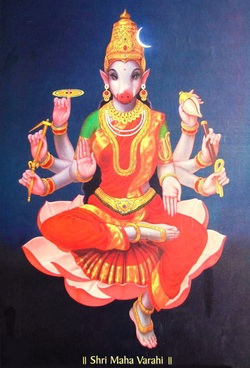
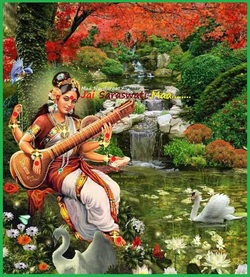
|
| Goddess Vidya |
|
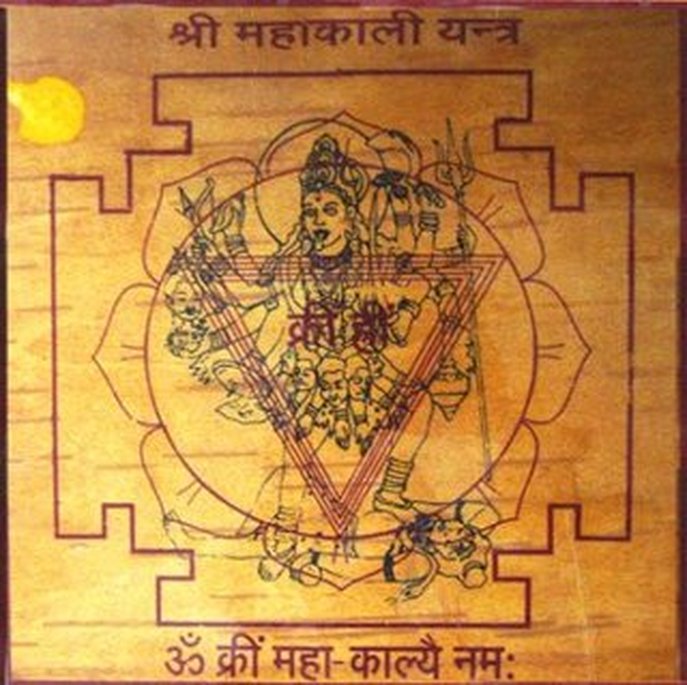
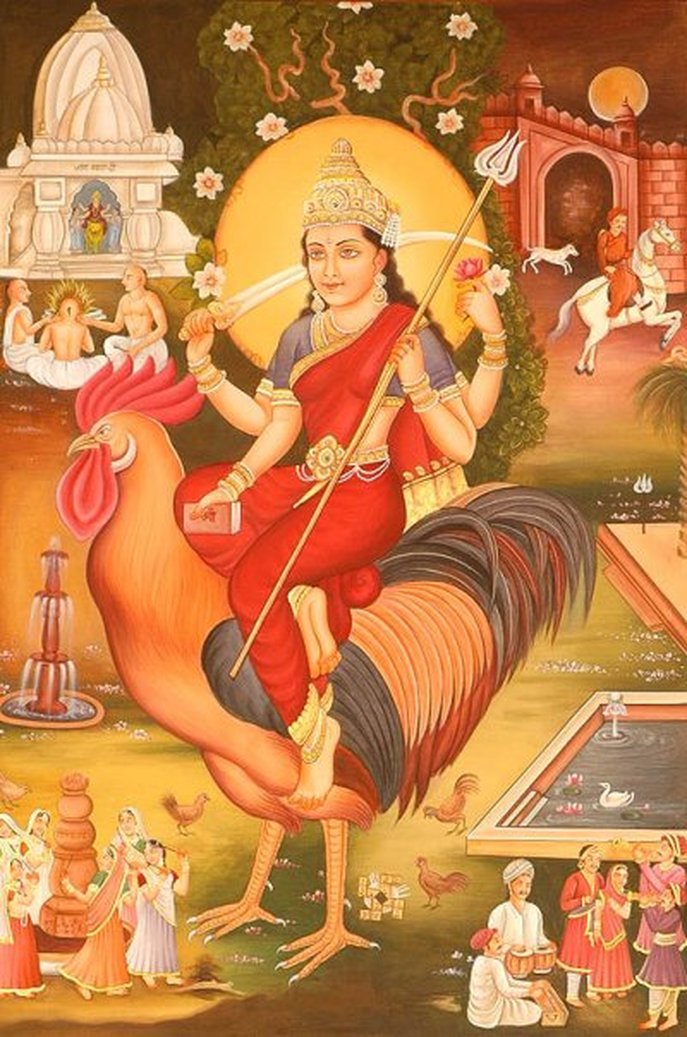
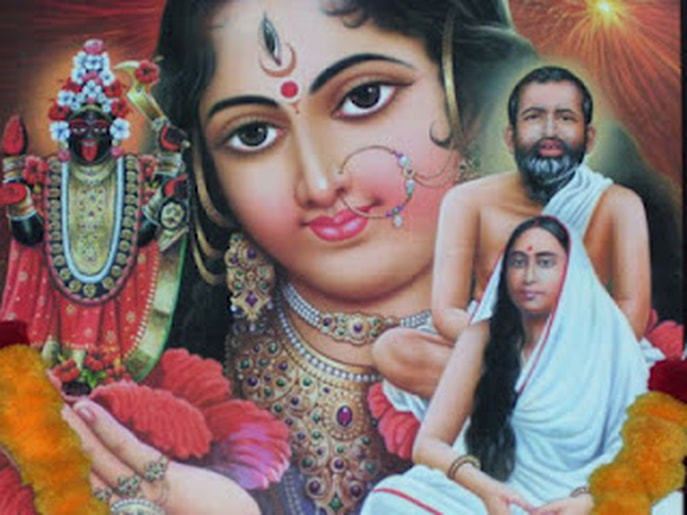
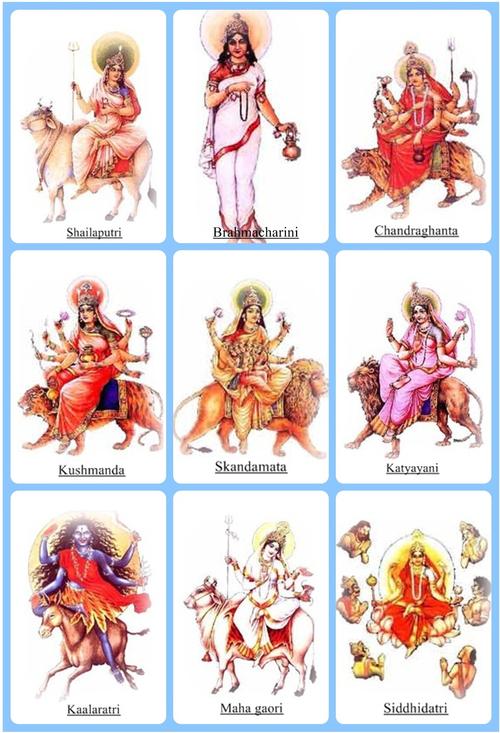
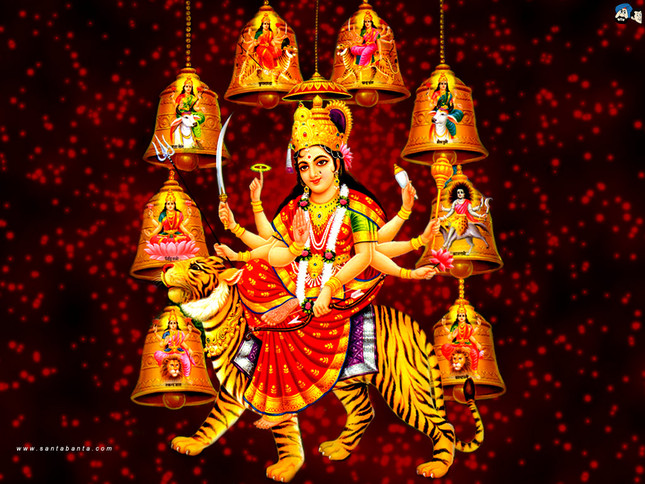
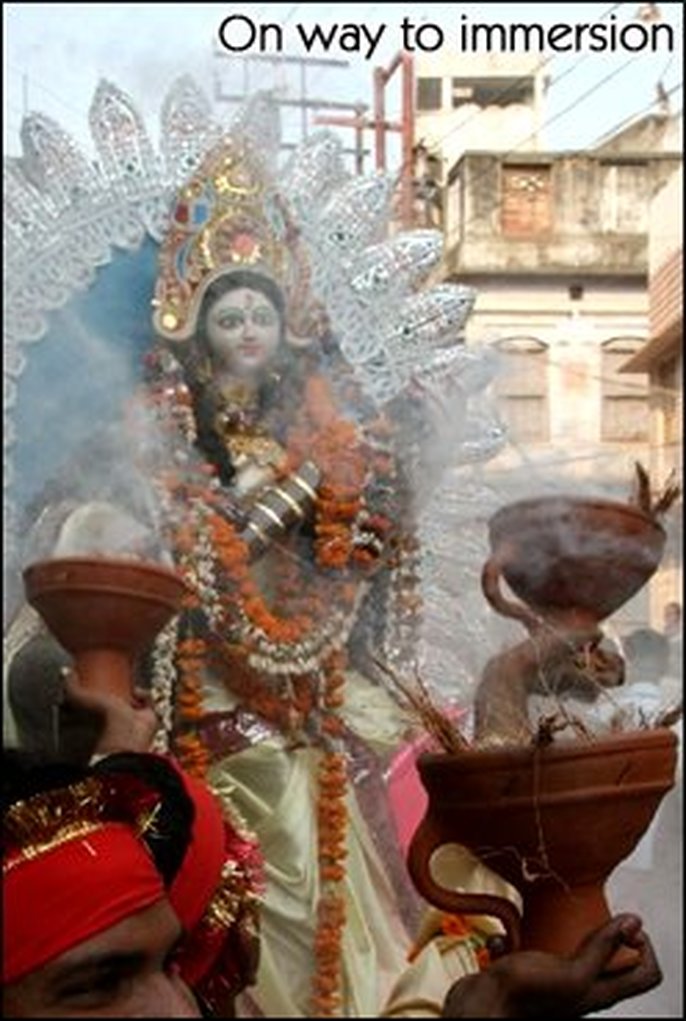
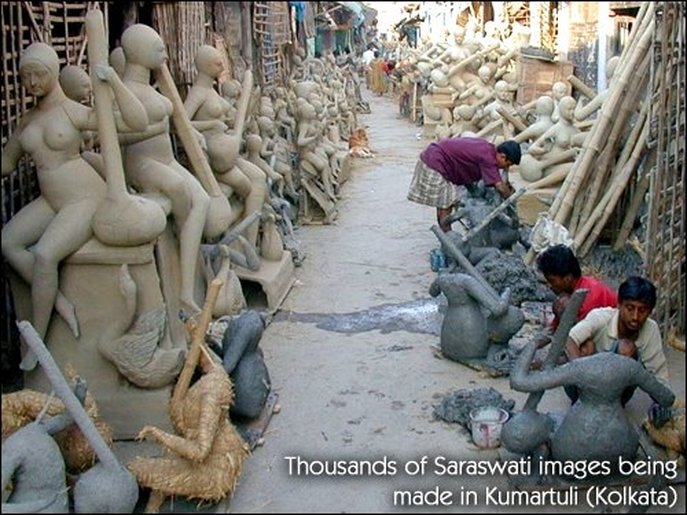
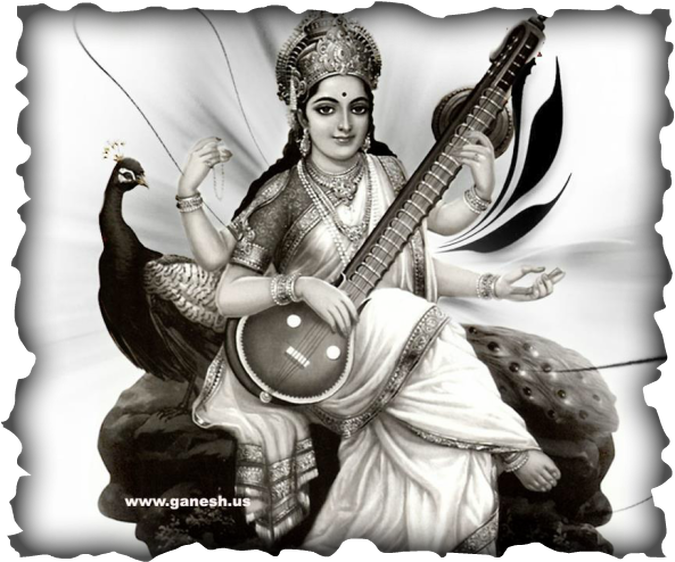
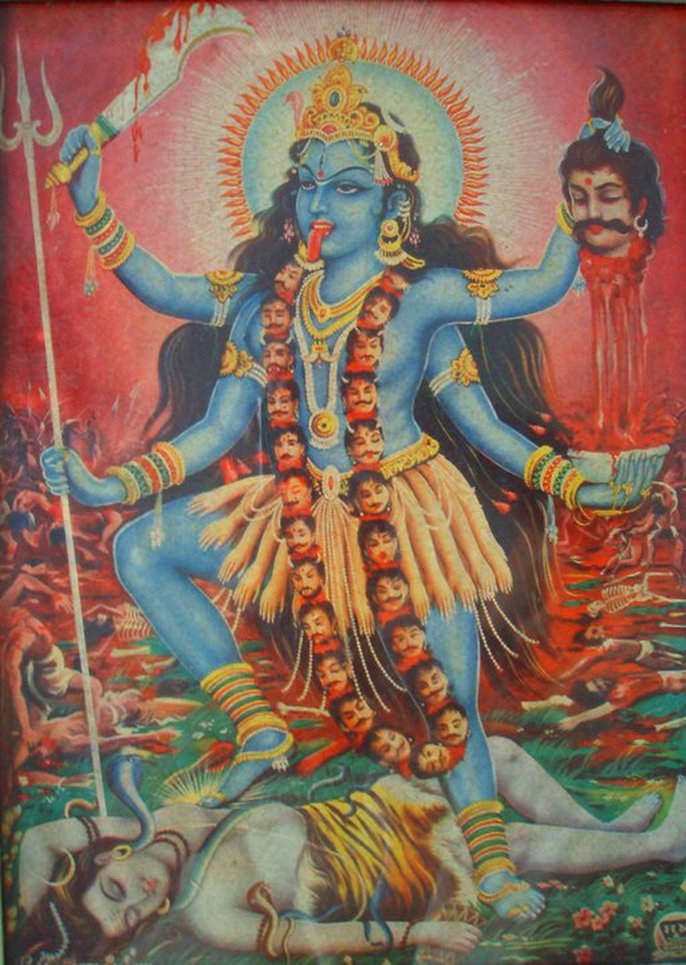
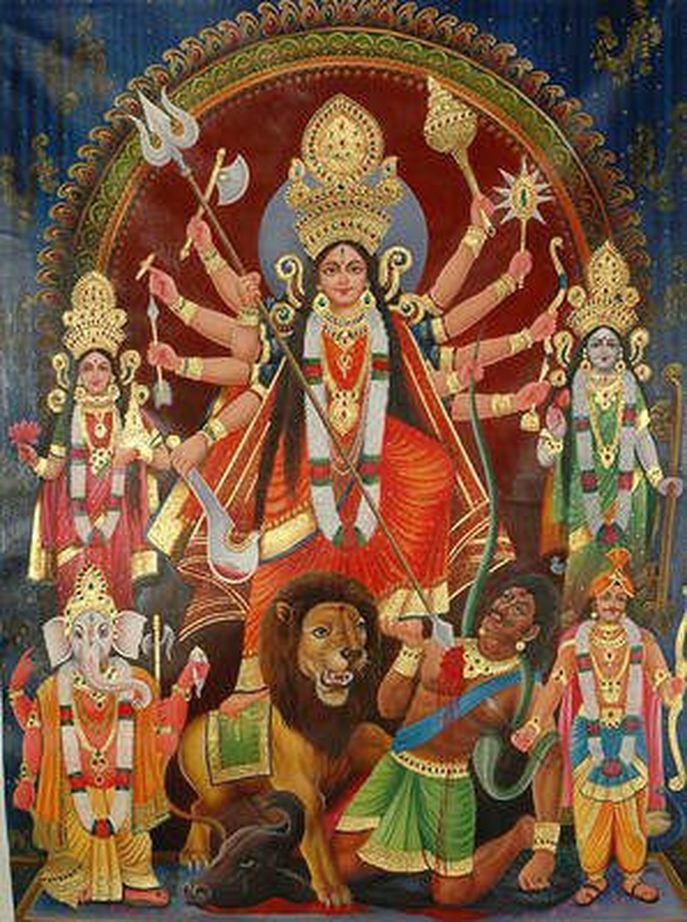
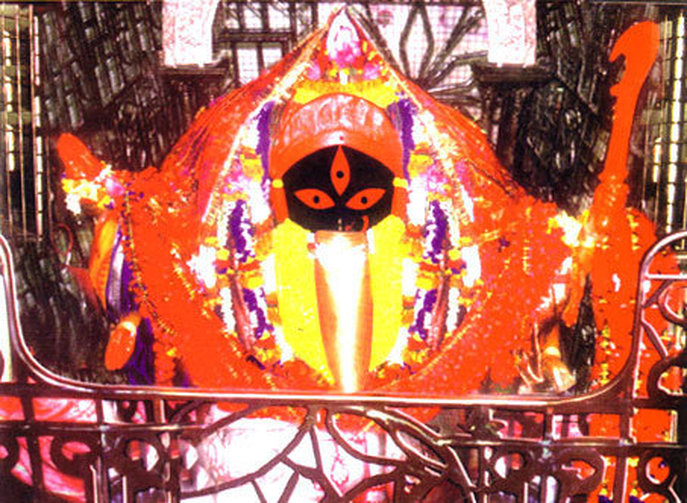
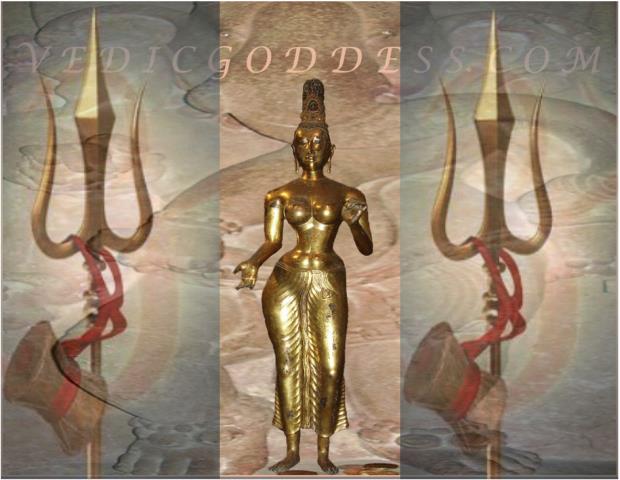
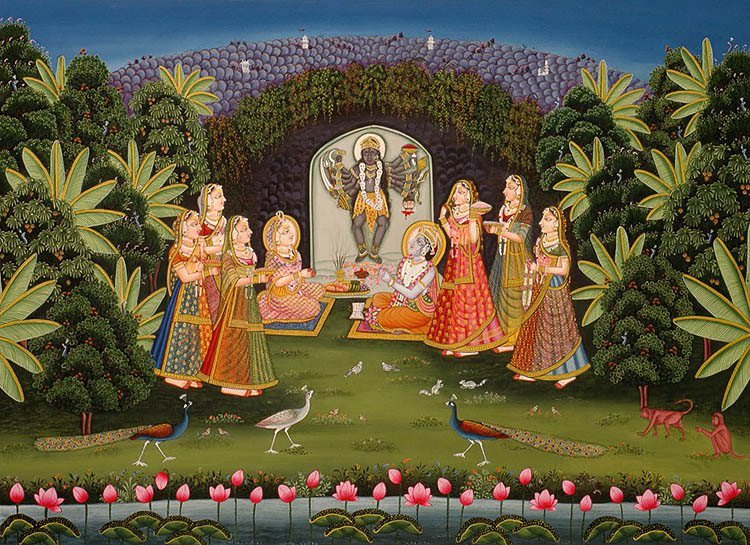
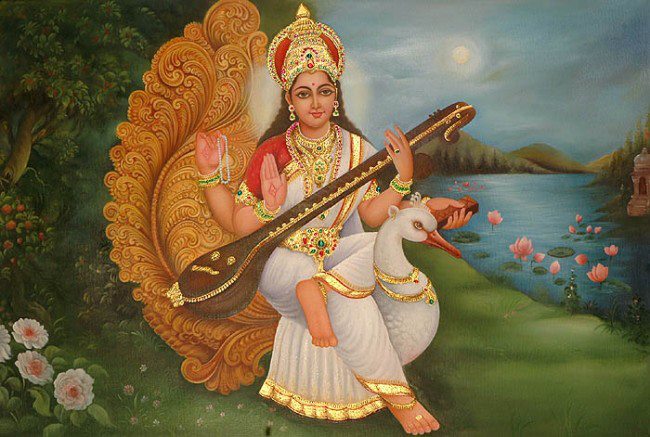
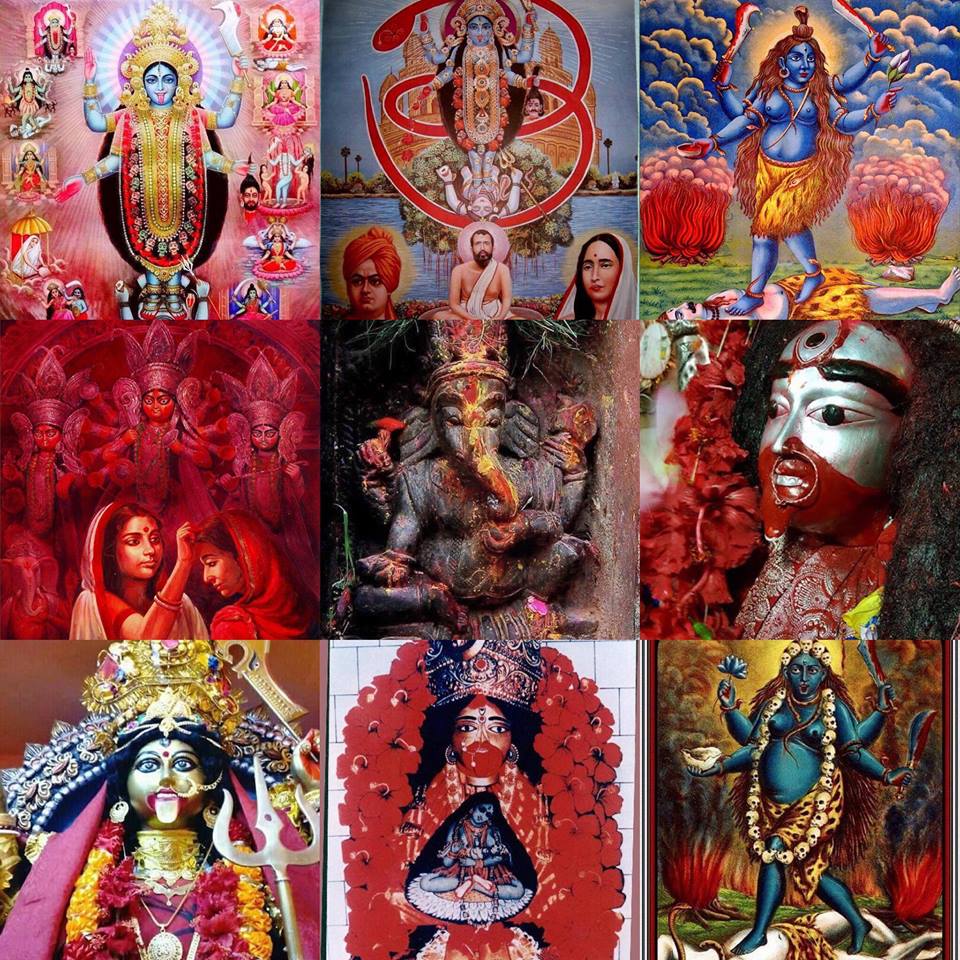
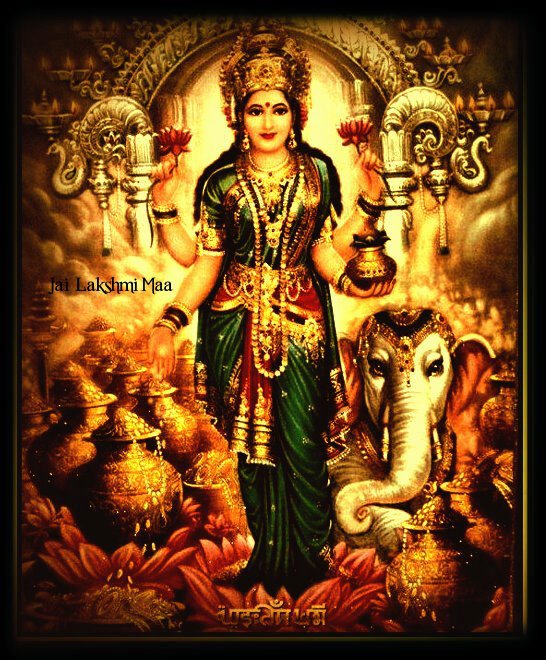
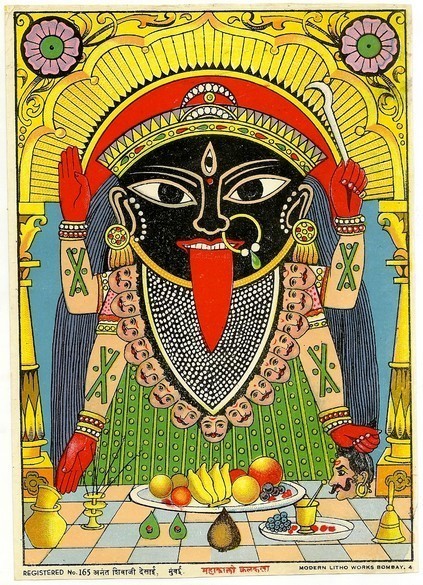
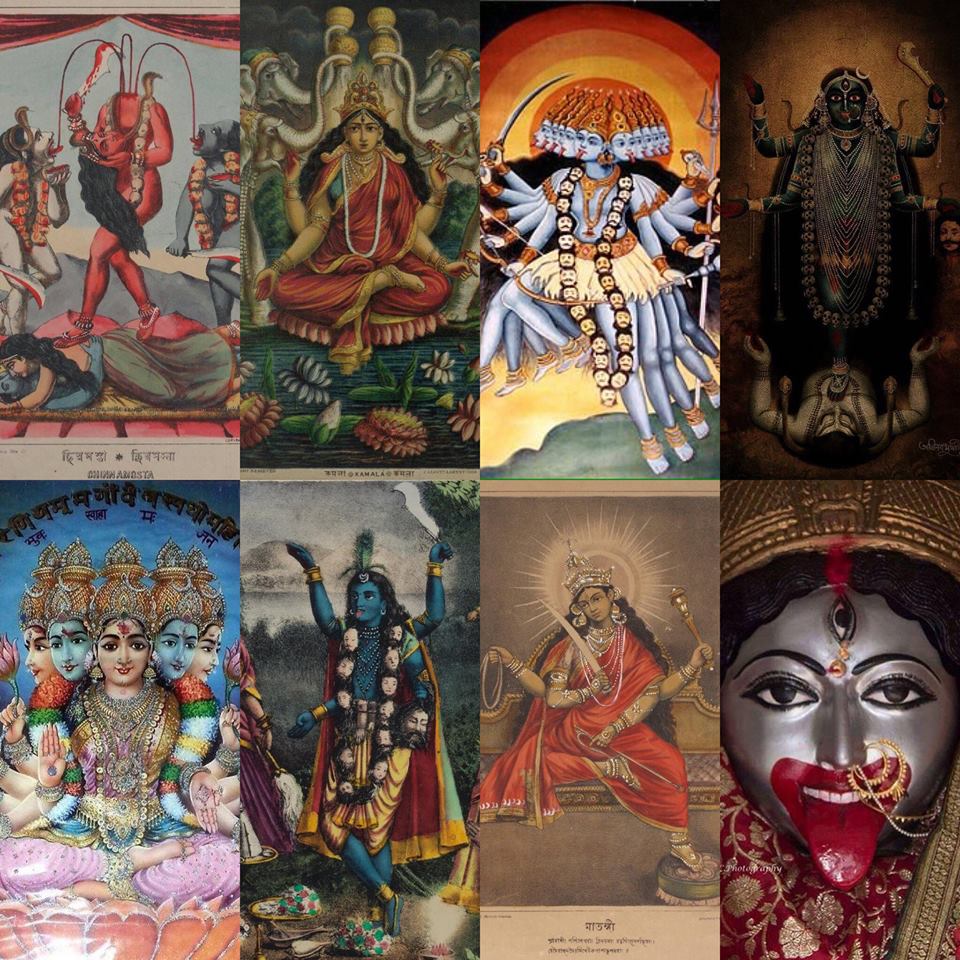
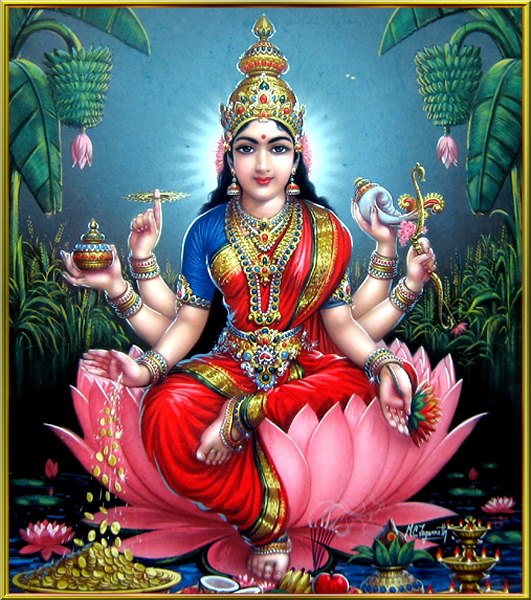
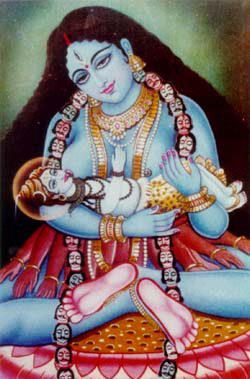
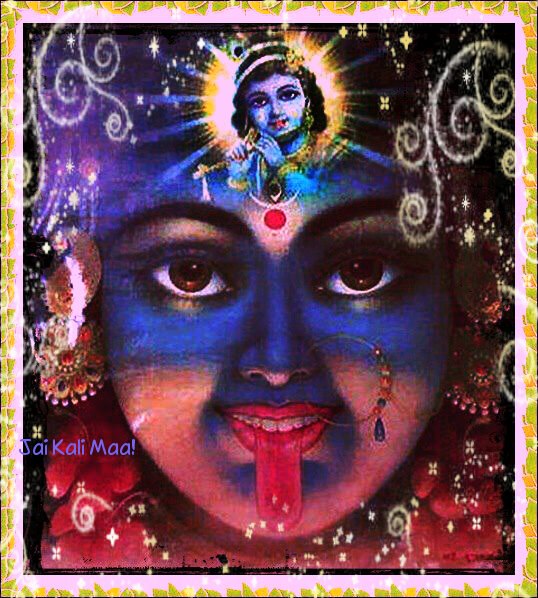
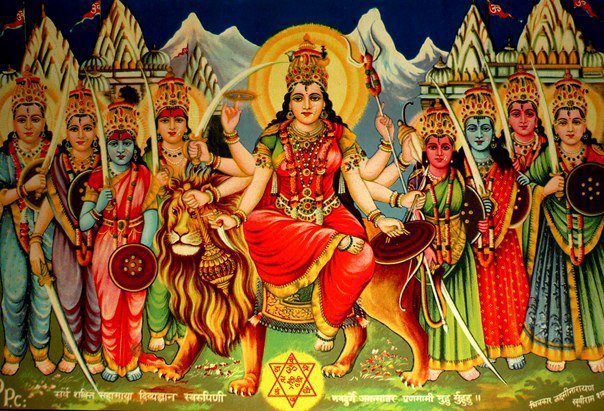
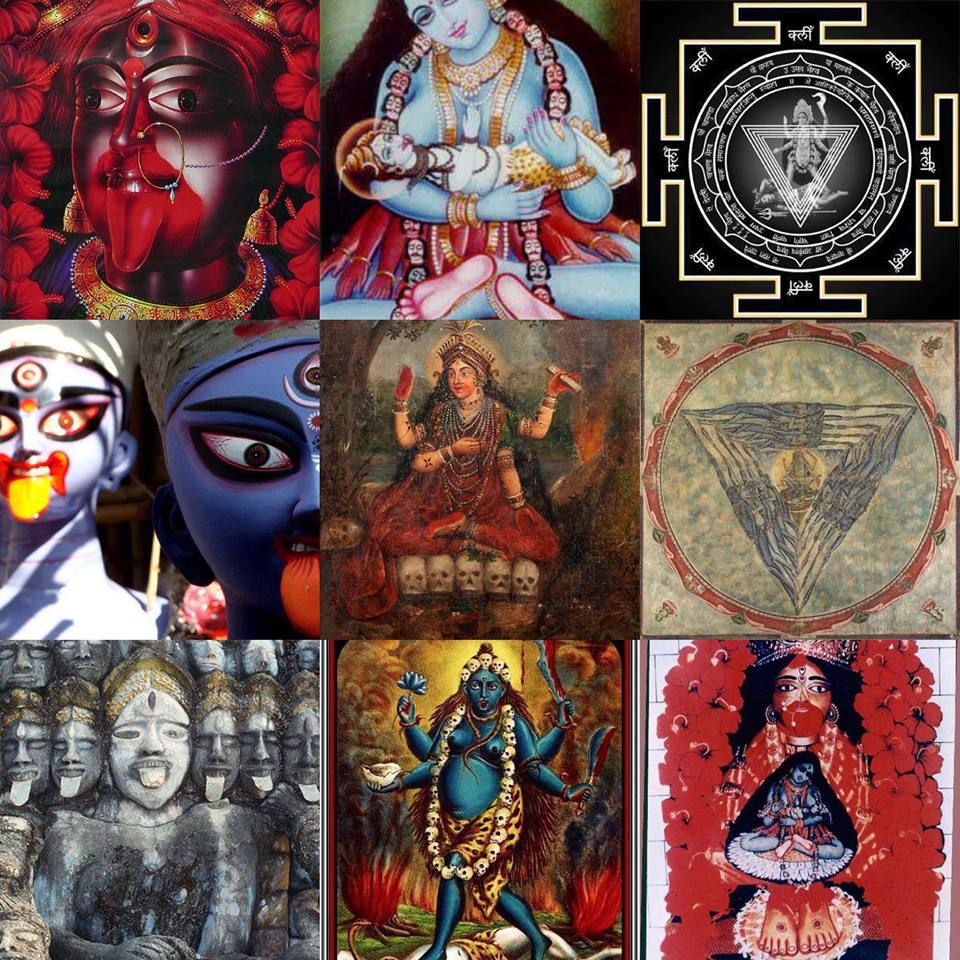
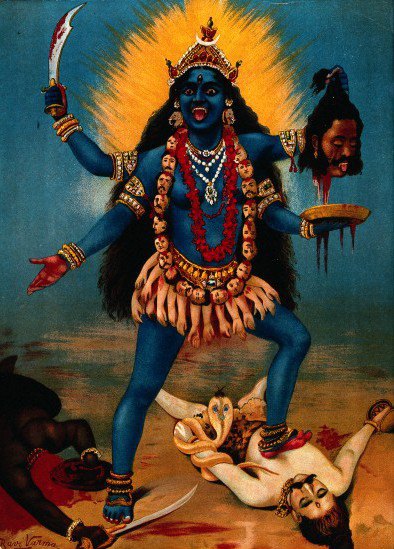
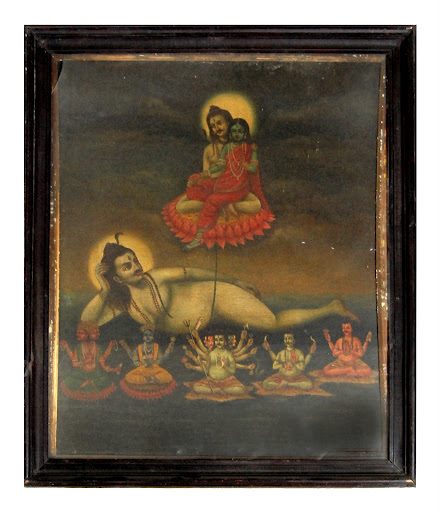
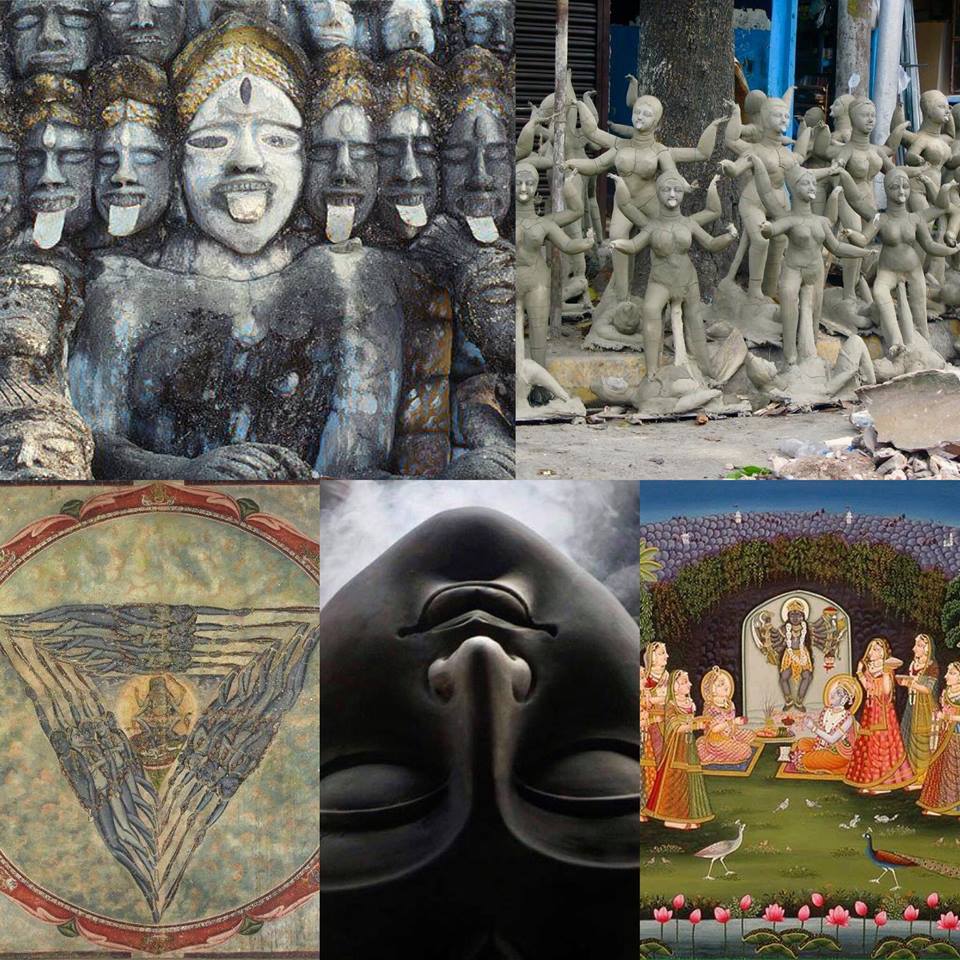
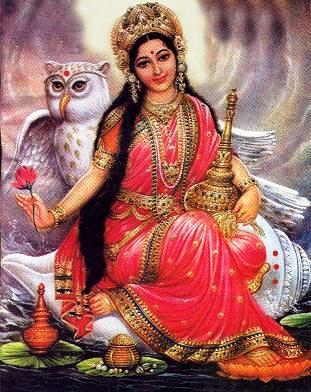
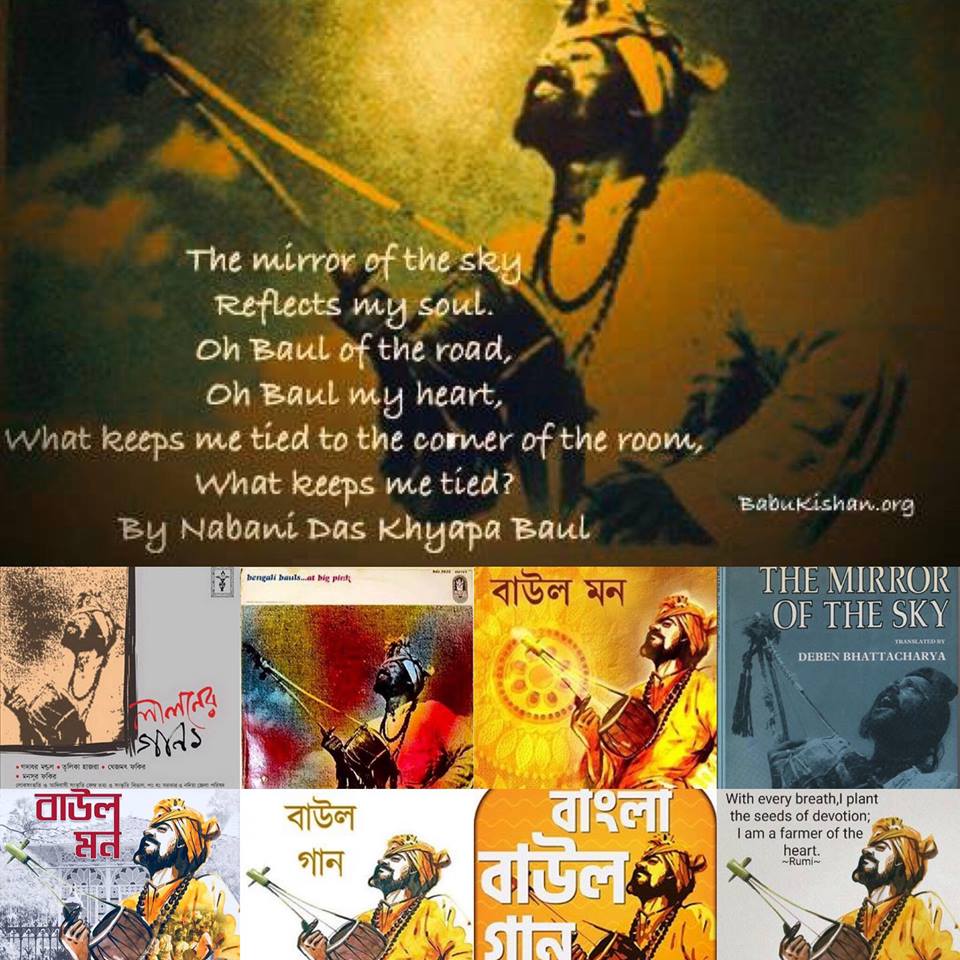
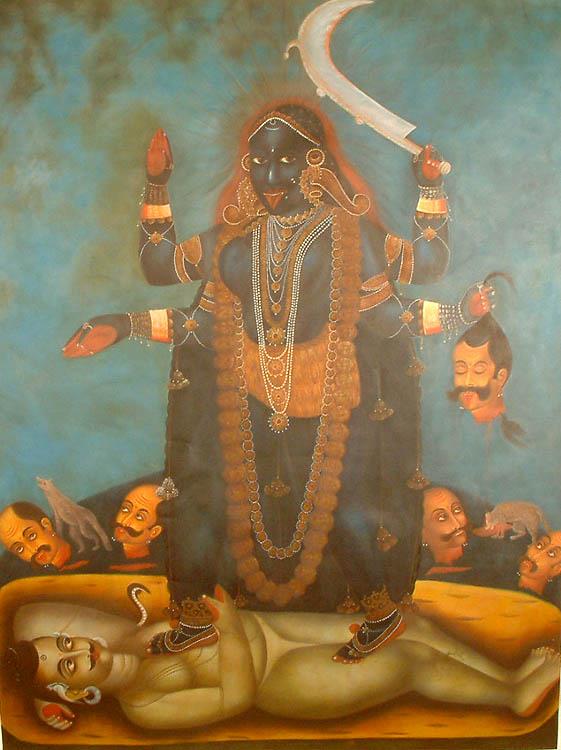
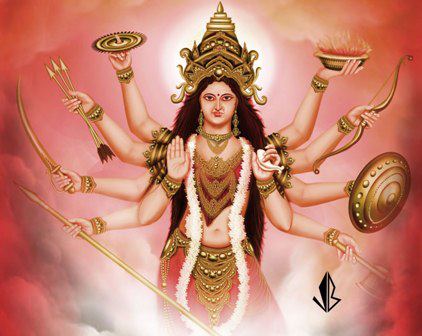
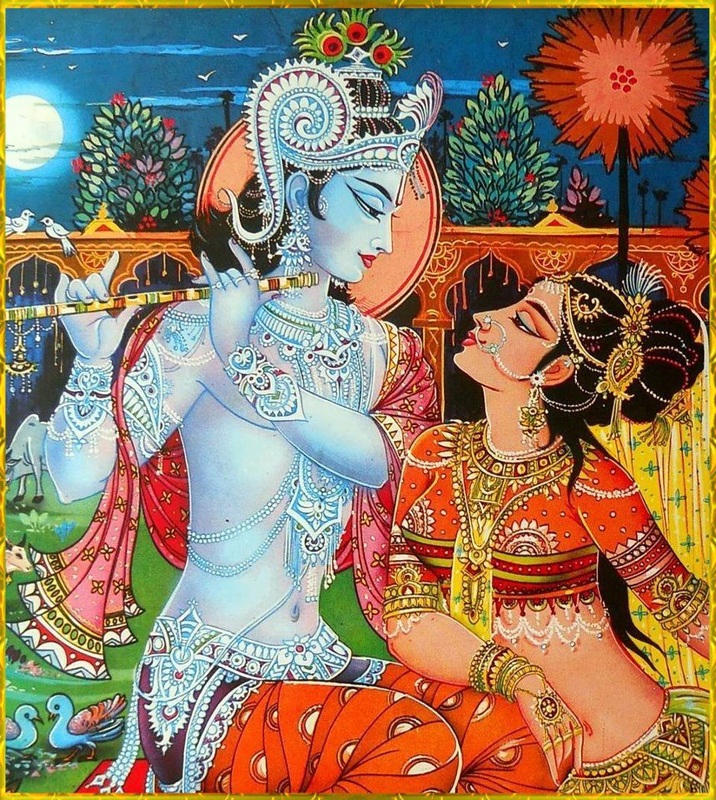
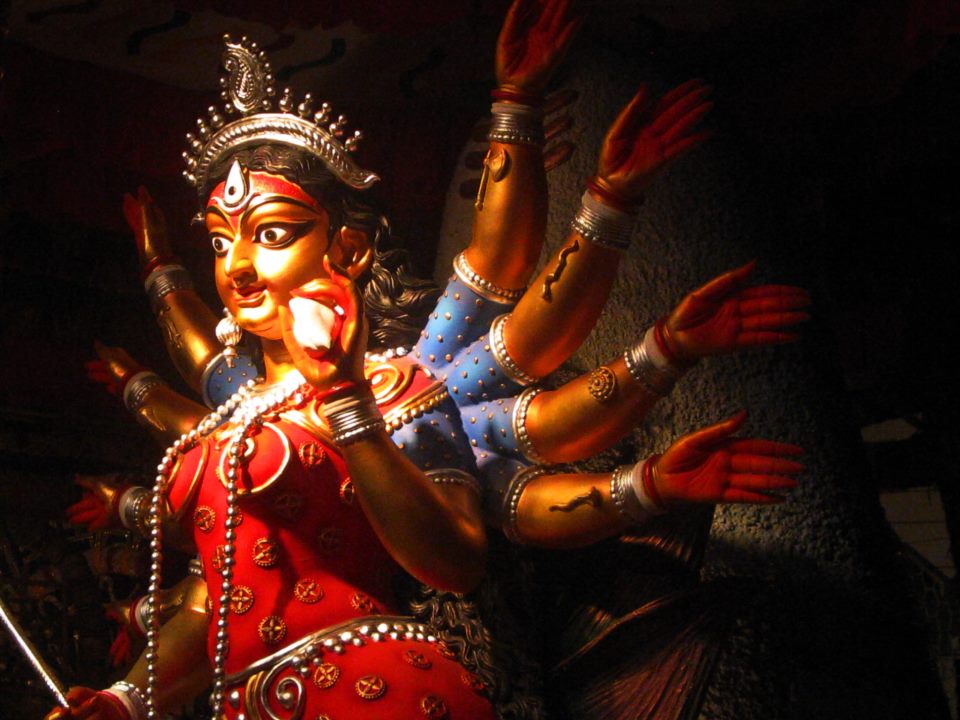
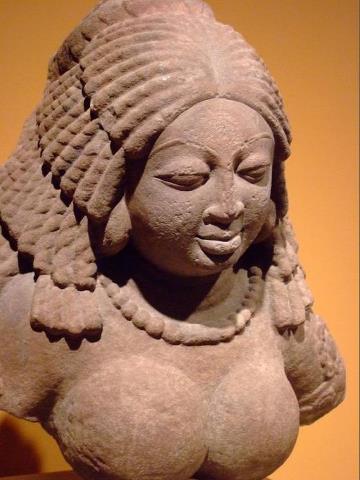
 RSS Feed
RSS Feed
